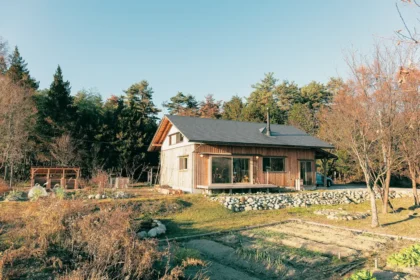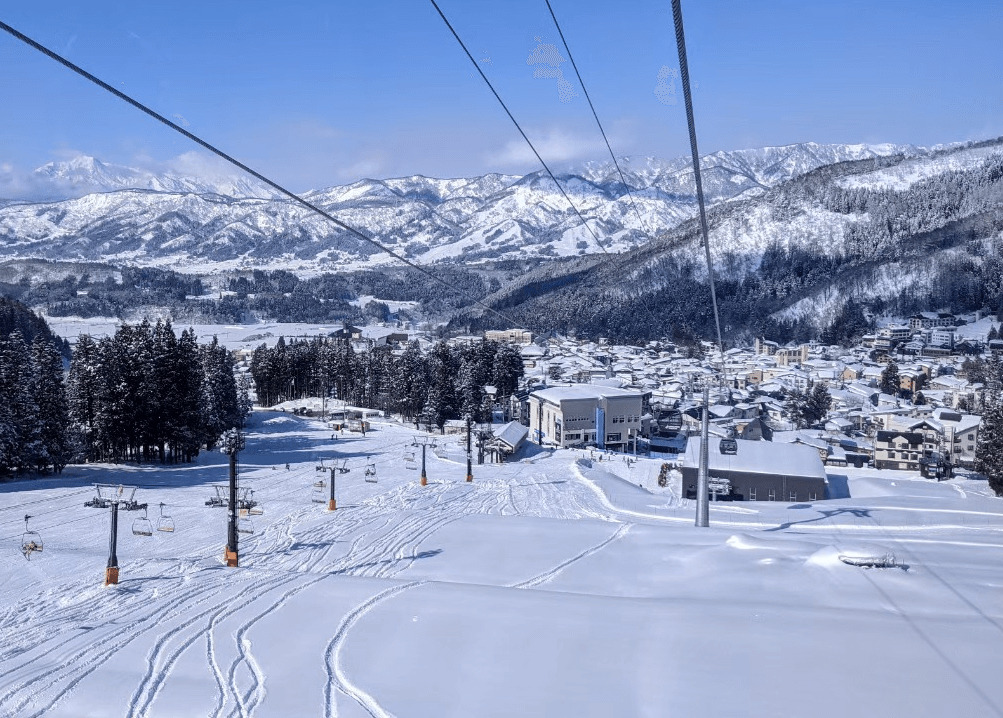
Blessed with fantastic powder and a huge number of resorts, Japan is Asia's premier ski and snowboard destination. It is also one of the easiest markets for foreingers to buy property in, making it hugely enticing when looking for property in and nearby one of its many excellent resorts. On this page you will find the following information:
-- Best Nagano Resort Areas to Buy In
-- Buying Real Estate in Japan: A Complete Guide
Japan is blessed with countless ski resorts spread across the prefectures of Central and Northern Japan. Information on this page focuses on Nagano and the surrounding areas. Home to the greatest number of ski resorts in Japan, several of which host events during the 1998 Winter Olympic Games, Nagano offers the largest range of real estate and all within easy reach of Tokyo. This page is intended to be used in conjunction with our 'Buying Real Estate in Japan: A Complete Guide' page.
BEST NAGANO RESORT AREAS TO BUY IN
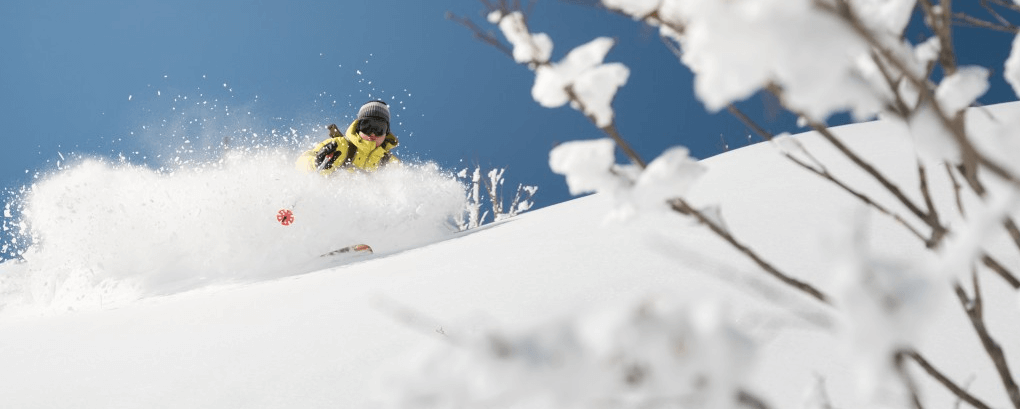

Japan is home to a huge number of ski resorts, almost all of which are located in Nagano and the surrounding prefectures of Central Japan, along with Tohoku and Hokkaido to the north. Nagano boasts the largest number of ski resorts of any prefecture in Japan including: Hakuba, Nozawa Onsen, Shiga Kogen, Madarao and Togakushi along with nearby Myoko Kogen in the southern end of Niigata Prefecture and the more distant resorts of Yuzawa. When you add Karuizawa to this list - one of Japan's oldest and most famous mountain resort towns - you have Japan's most attractive regional property market and all within close proximity of Tokyo. Here's our recommendation of the best areas to buy in and around in 2024:
HAKUBA
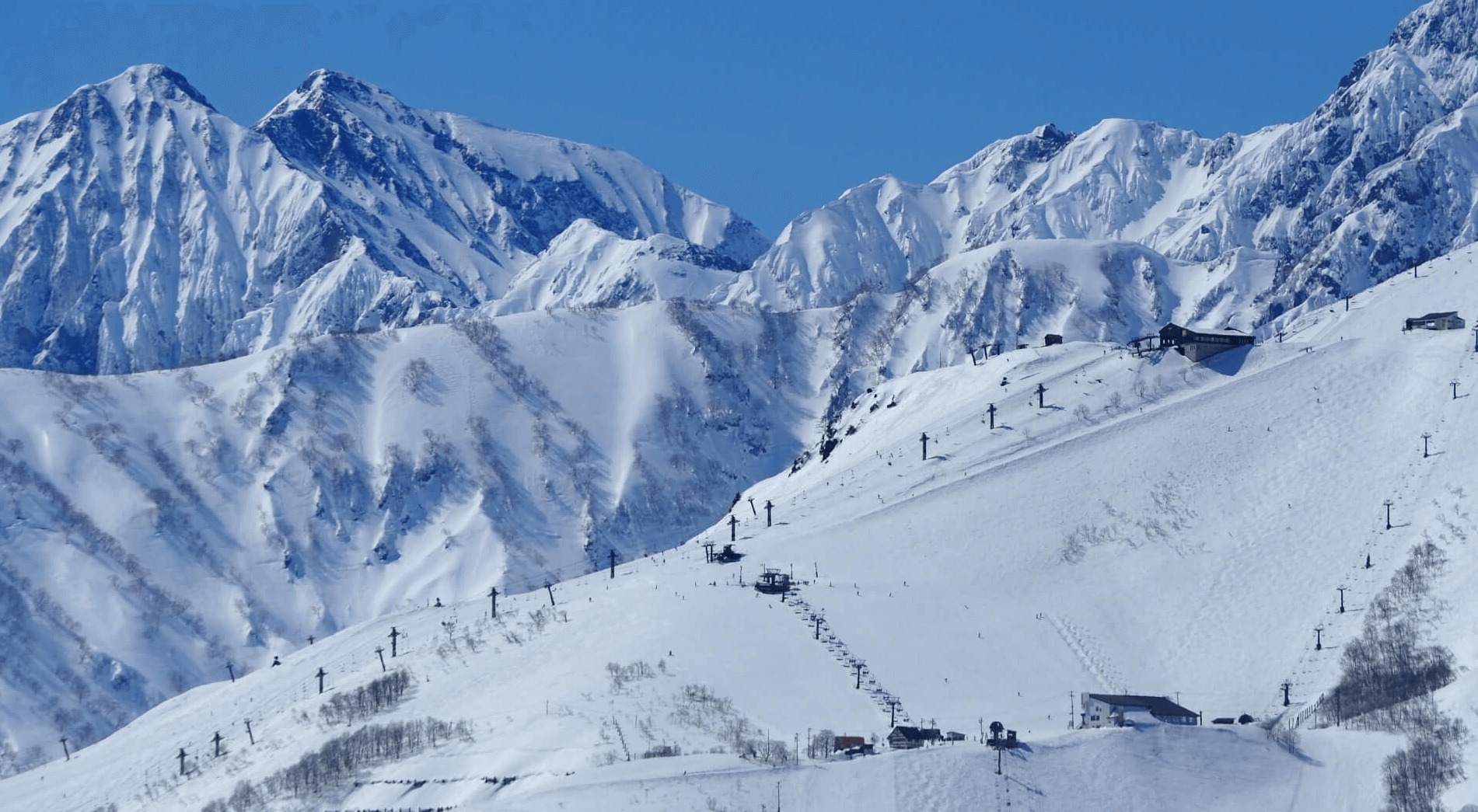
Located in Nagano Prefecture, Hakuba lies 40KM (<1 hour drive) to the west of Nagano City / Nagano Station and 275KM (<4 hours drive) to the northwest of Tokyo. Often referred to as ‘Hakuba Valley’, the area runs north to south between the foothills of the Hida Mountains – also called the ‘North Alps’ – on its western border. The majority of Hakuba’s ski resorts are found on the western-side of the valley and attract visitors from all over the world each winter. Hakuba Valley claims to be the largest ski resort in Japan however it is important to note that while collectively, the ten resorts in the area make-up the largest extent of terrain in the country, only a couple of the resorts are connected meaning that you need to use a bus or drive between them. Most famous for its winters, Hakuba is increasingly establishing itself as an all-year-round destination with lots of high-end properties, dining and shopping, and one of Japan’s best ‘green season’ sports regions.
Area Profile & Property Types
Hakuba can lay claim to being Nagano’s best-known and most international ski area. Alternatively referred to as both ‘Hakuba’ and ‘Hakuba Valley’, it’s important to note Hakuba itself is a village in the central and southern end of the valley, while the overall area referred to as Hakuba Valley takes in areas of another village callled Otari, located to the north. Hakuba’s popularity has exploded over recent years. Properties are in high-demand and it is one of the few resorts areas in Central Japan to see continued growth in property prices, a trend that is likely to continue into the foreseeable future.
Hakuba boasts the most luxury properties of any ski area in Nagano with high-end homes, chalets and apartments found mostly in the central and southern end of the valley. An increasing number of high-end hotels and other accommodation, restaurants and bars are also dotted across the central and southern end of the valley, centred around the resorts of Happo One with new developments also popping-up around ABLE Goryu, Hakuba47 and Iwatake – see below for resort profiles. Property prices in these areas are high with a lot of competing buyers.
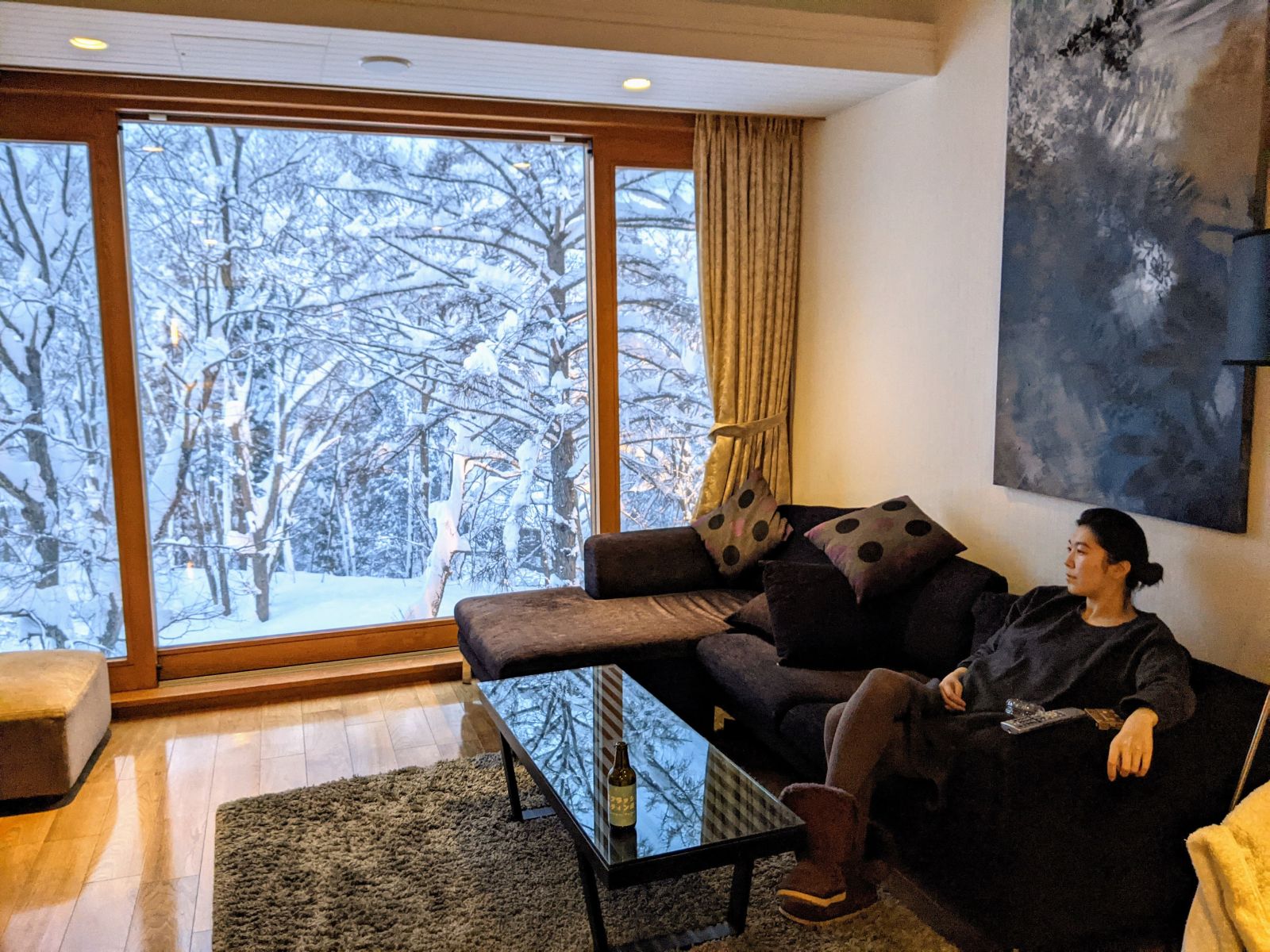
The northern area of the valley offers notably fewer high-end properties. Much of this area including the resorts of Tsugaike, Cortina and Norikura – see below for resort profiles - actually sit within the village of Otari but are also included under the Hakuba Valley umbrella. Though lying within thirty minutes drive of central Hakuba village, the distance to these resorts and their lesser profile with international visitors means that property prices are notably lower and you can still find some bargains on the market – especially for buyers looking for an older home or business to purchase and renovate. Don’t expect that to last for long though, as sooner rather than later huge popularity of Hakuba will spread to the north and prices will rise.
Resort Profiles
Ten resorts fall within the ‘Hakuba Valley’ grouping. The area promotes itself as Japan’s largest snow resort however it’s important to note that this isn’t quite true and is a marketing device. In stating this, Hakuba is adding the terrain of all resorts under the ‘Hakuba Valley’ umbrella – just over 1000 hectares in total, to promote itself as the largest ski resort in Japan. This is misleading given that only a couple of the resorts are connected and to move between most of them, you need to drive. The largest connected, skiable area in Hakuba offers 220 hectares of terrain - compare this to other resorts in Nagano such as Nozawa Onsen, around 300 hectares, and Shiga Kogen, over 400 hectares, then the claim is quite misleading.
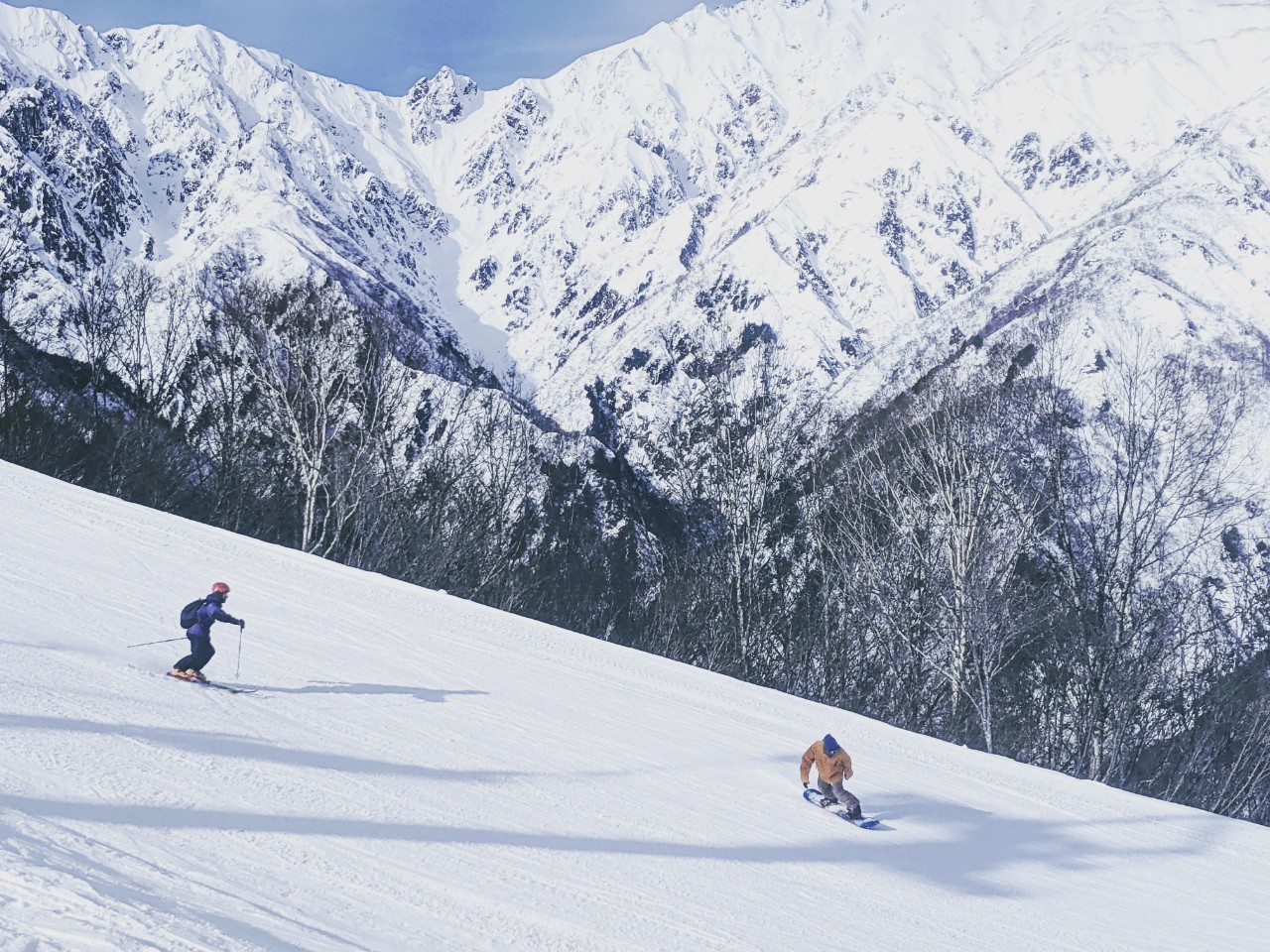
It should not distract from the fact that Hakuba offers some of the best skiing and snowboarding in Japan – with all ten resorts covered by the ‘Hakuba Valley Ticket’ and within forty minutes drive of each other. Hakuba Happo One Snow Resort is the largest in the valley – 220ha / 761 – 1831m – while the nearby joint resorts of ABLE Hakuba Goryu Snow Resort – 120ha / 750 – 1676m - and Hakuba47 Winter Sports Park – 80ha / 820 – 1614m – combine to offer around 200 hectares of terrain. These resorts offer a fantastic mix of terrain, catering to all levels, and all three allow backcountry. Hakuba Iwatake Snow Field – 120ha / 750 – 1289m – is one of the most picturesque in the valley and rounds-out the main resorts of the central and southern valley. Its lower elevation means that snow conditions vary a lot but when they are good they are great and the resort is particularly well-suited to families and beginners.
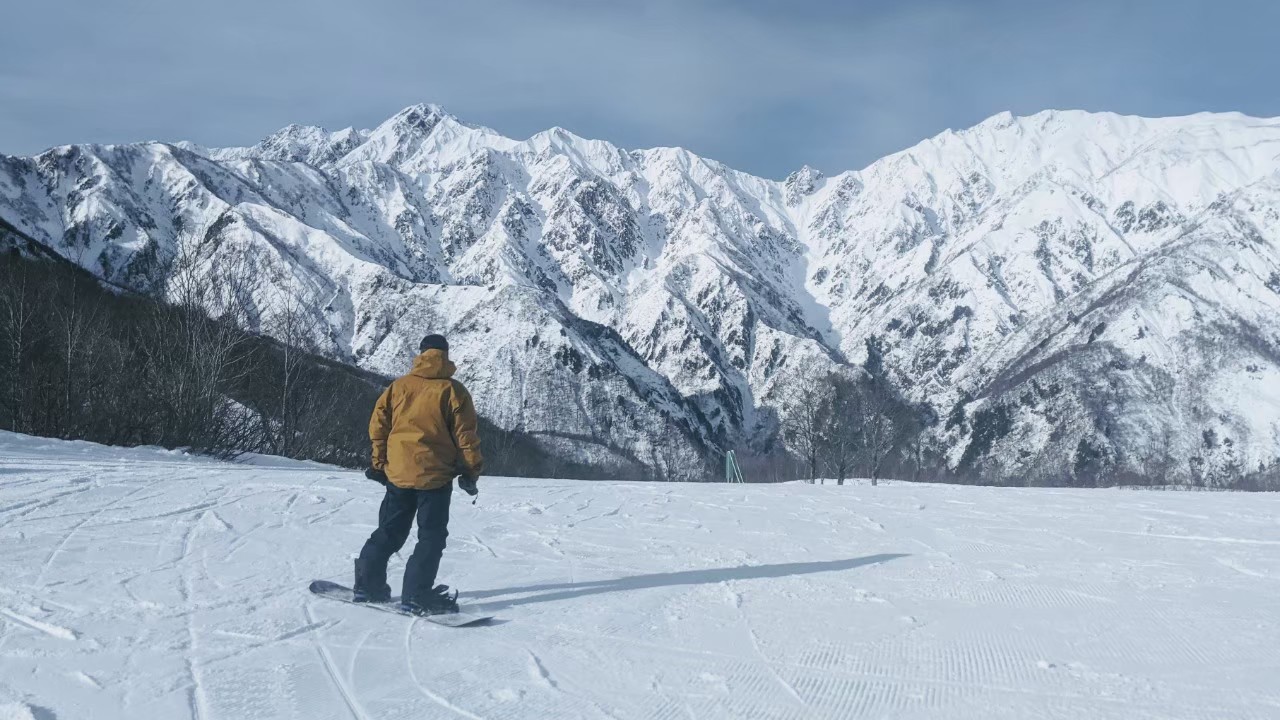
Heading to the north the sizeable Tsugaike Kogen Snow Resort – 196ha / 800 - 1704m – is the largest standalone resorts in Hakuba after Happo One and is also known for its backcountry; while the most northern resorts are the joint ski resorts of Hakuba Cortina Snow Resort – 50ha / 872 – 1402m – and Hakuba Norikura Onsen Snow Resort – 50ha / 700 – 1300m – which combine to offer 100 hectares of terrain and the steepest terrain in the valley. These three resorts are actually located in Otari but are grouped within Hakuba Valley.
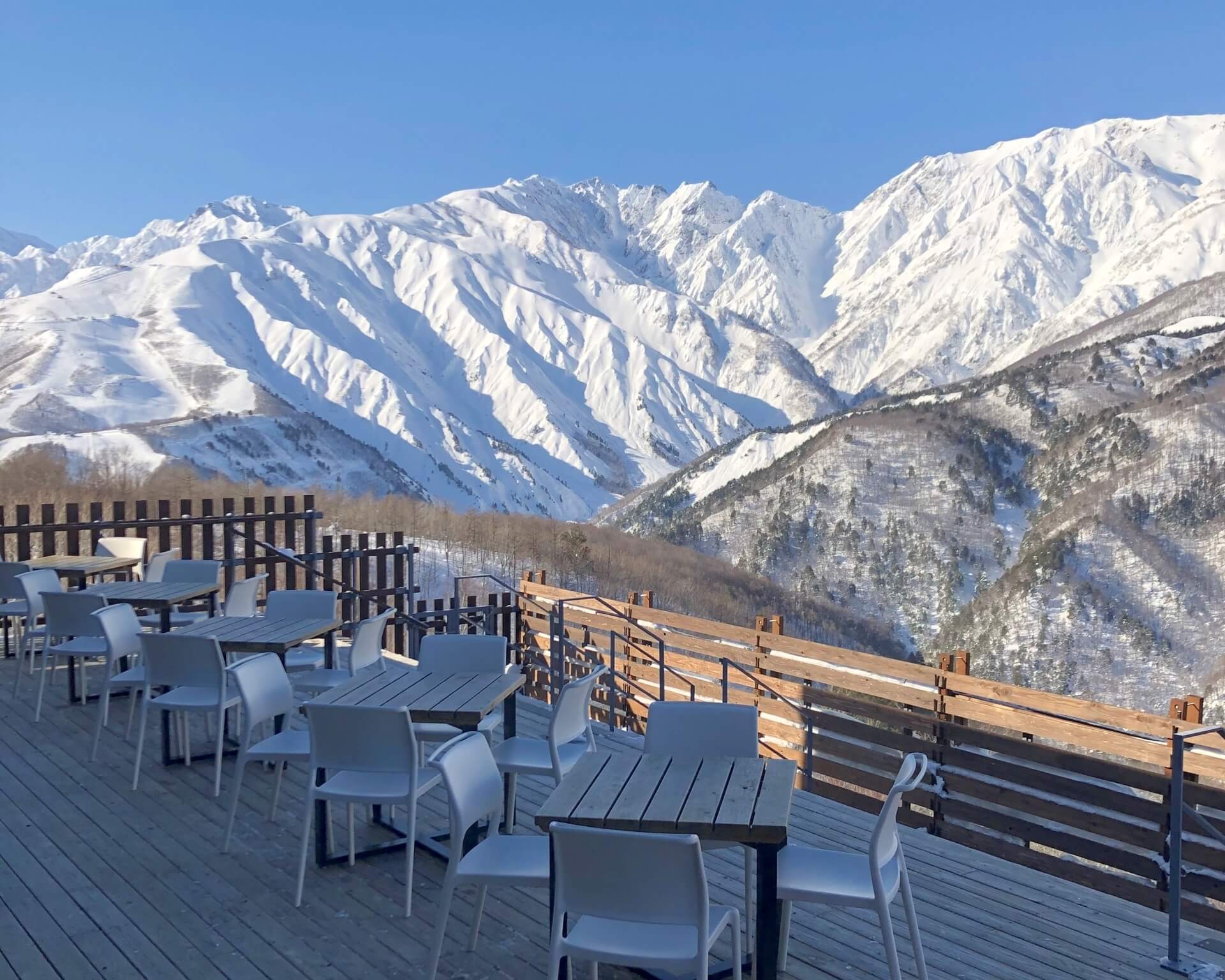
Plenty of people will tell you that Hakuba offers Japan's best overall skiing and snowboarding, with ten resorts within forty minutes. Though they range in size and character, collectively they offer a fantastic amount of terrain with something for everyone, including some of Asia's best backcountry. Combine this with some of Japan's best apres ski, an increasing number of high-end accommodation, homes and restaurants and the most services for English and other foreign language-speakers, it's easy to understand why these resorts are so popular.
*The smaller, very local resorts of Jigatake Snow Resort, Kashimayari Snow Resort, Hakua Sanosaka Snow Resort round-out the ten resorts of Hakuba.
NOZAWA ONSEN
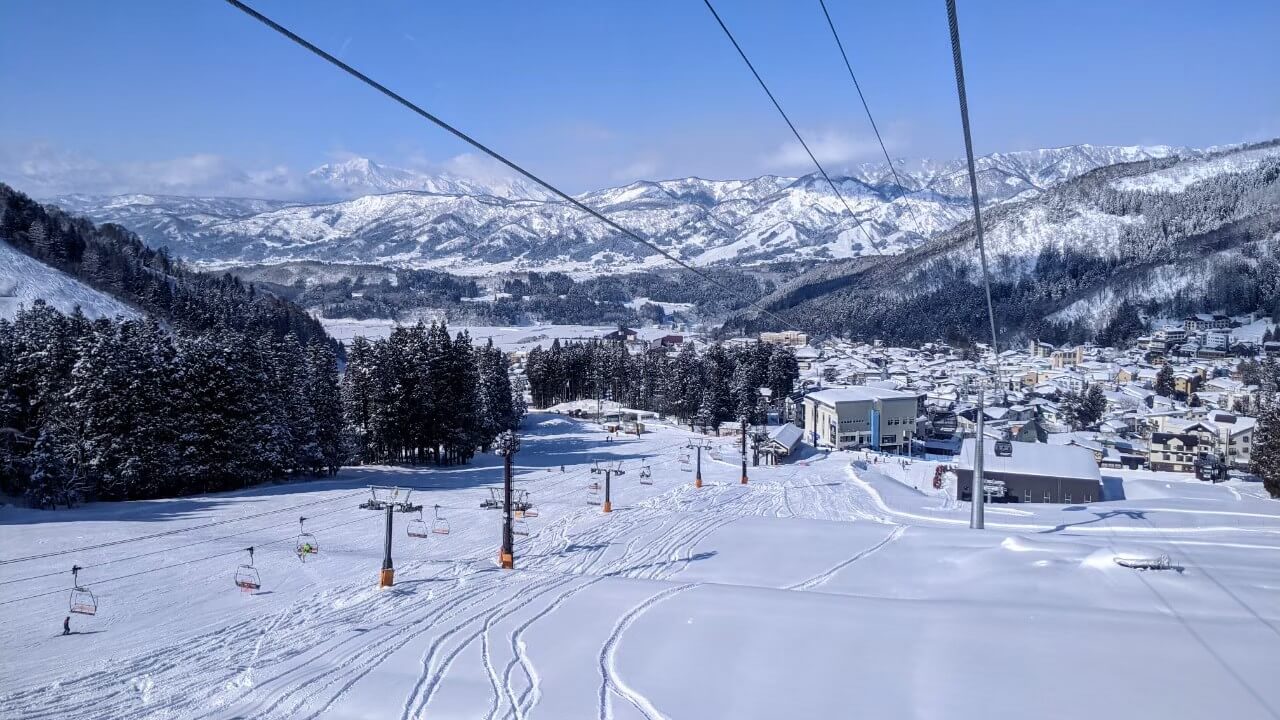
Located around 50KM (<1 hour drive) to the northeast of Nagano City and within easy reach of Tokyo – 260KM (<4 hours drive), Nozawa Onsen is a historic hot spring town better known in recent years as one of Japan’s most popular ski resorts. The town lies around 20 to 25-minutes drive from Iiyama Station. As a stop on the Hokuriku Shinkansen line running from Tokyo to Kanazawa via Nagano, Iiyama Station is a convenient hub from where to reach Nozawa by shuttle bus or taxi – a total journey time of around 2 hours from Tokyo. Nozawa’s history as a hot spring town stretches back more than 1000 years but for international visitors, it is best-known for its fantastic ski resort and lively village offering some of Japan’s best apres ski. Outside of winter, Nozawa Onsen is much quieter but developing as an all-year-round destination with some excellent accommodation, dining, outdoor activities, hot springs and a couple of very good breweries enticing you invest in a property for yourself.
Area Profile & Property Types
Nozawa Onsen is a standalone ski resort with a compact village spread around its base. The historic character of the village, as an ‘onsen’ (hot spring) town, imbues Nozawa with plenty of charm and appeal, with hot springs dotted throughout. If this were written fifteen years ago, we would likely have described Nozawa as the big upcomer in terms of resort property in Nagano however it is now well-established as one of Japan’s best ski resorts - and particularly popular with foreign visitors - meaning that property prices are now high and there are few bargains available – at least not in the central village.
An increasing number of high-end properties are popping-up in Nozawa including luxury chalets and lodgings. Combine this with the ever-increasing number of good restaurants and bars spread through the village and Nozawa has huge appeal. It boasts some of Japan’s best apres ski, loads of English and other foreign languages services along with companies exclusively servicing the foreign market. Nozawa retains much of its traditional charm however it’s at risk of being overwhelmed as the popularity of the resort sees more and more businesses catering mostly to foreigners. Outside of winter, Nozawa Onsen is notably quieter and more popular with Japanese who visit to enjoy its onsen guesthouses.
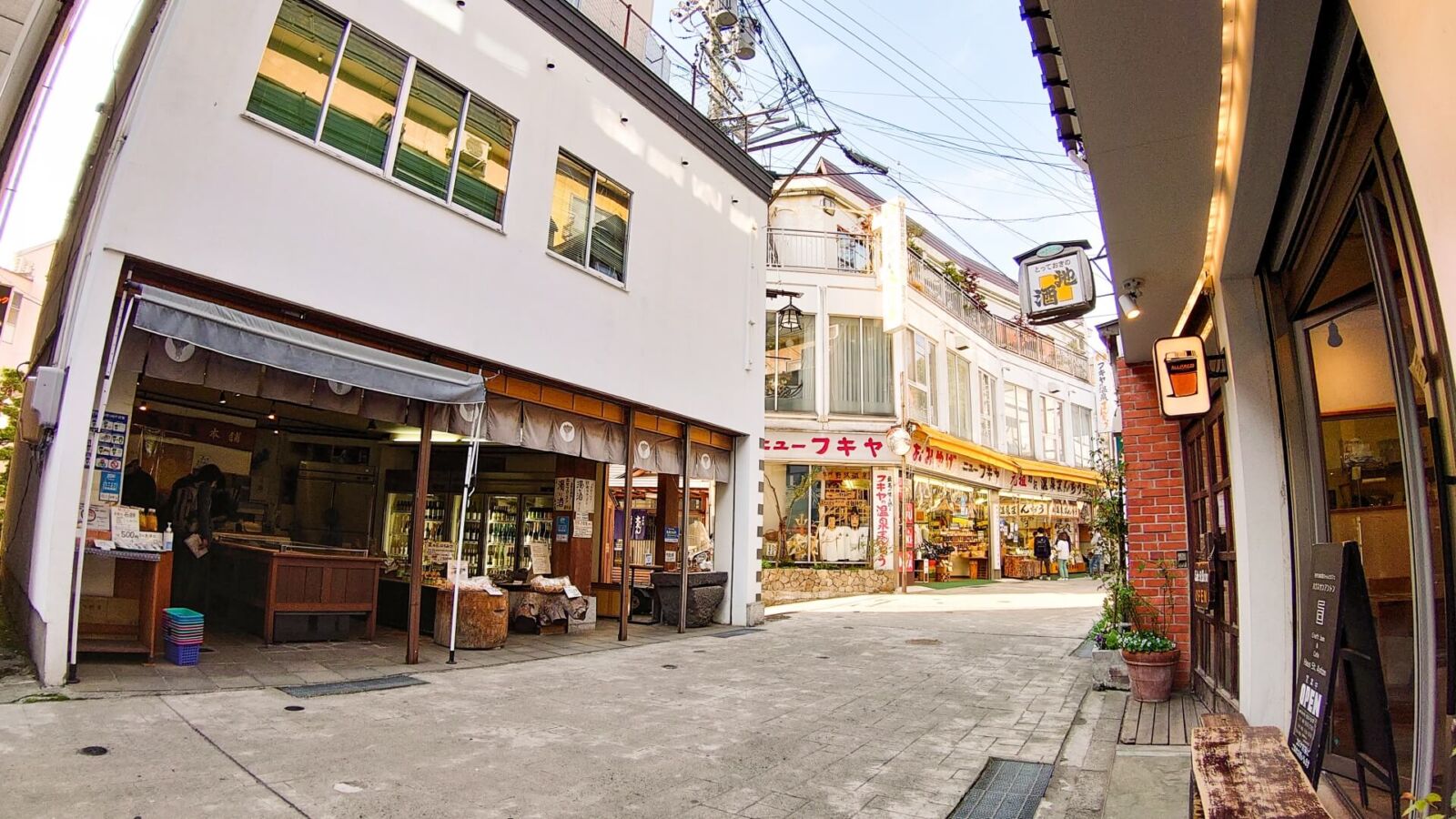
Property prices in Nozawa Onsen are increasing year-on-year and while that growth may not match prices in Hakuba, it’s a trend that is unlikely to change anytime soon. The compact nature of the village means that prices in the central area are high. The days of finding a real bargain in the village itself are gone and buyers looking to purchase a business might be best-served to look elsewhere given the existing amount of competition. Within 30-minutes drive of Nozawa, villages such as Togari – which has its own small resort – offer much lower property prices and opportunities to purchase homes, lodges and other businesses.
Resort Profile
Nozawa Onsen Ski Resort is one of Japan’s best ski resorts. Boasting around 300 hectares of terrain and over 1000 metres of vertical, it is one of the largest resorts in the country and has something for everyone. Despite its relatively low elevation – 565 to 1650 metres – Nozawa’s location and the direction of the slopes mean that it typically receives large amounts of excellent powder. Just ask anyone who’s been there before, when the powder is good it’s great and resort has something for everyone. Everyone other than those wanting to get off-piste and into the really deep stuff. Frustratingly, Nozawa Onsen does not allow backcountry and should you be caught out-of-bounds, expect to have your pass taken away. They don’t have much humour about people breaking the rules.
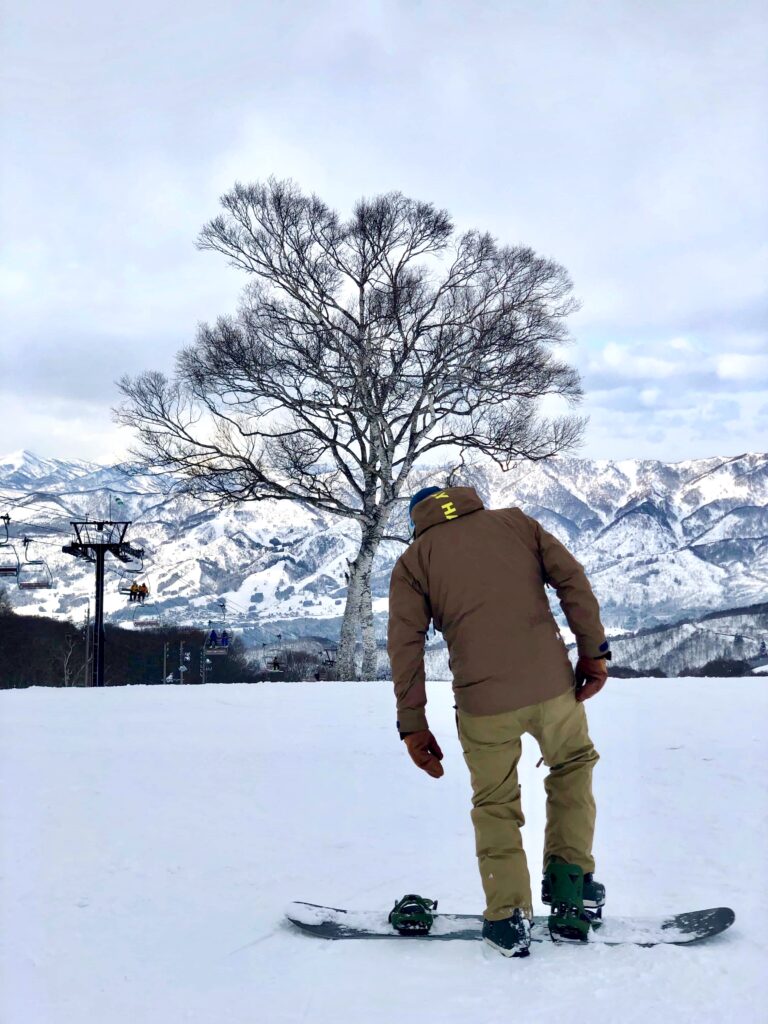
As good as the action is on the mountain, Nozawa’s big appeal is just as much what happens off it. The compact village is full of restaurants and bars that combine to offer some of Japan’s best apres ski. Often lively, Nozawa attracts plenty of young skiers and snowboarders looking to enjoy themselves and it can be hectic and noisy in the central village at night. Recent years have also seen the village attract more high-end options including the opening of AJB Brewery. The Nozawa brand is growing and the resort looks set to only become more popular in coming years.
SHIGA KOGEN
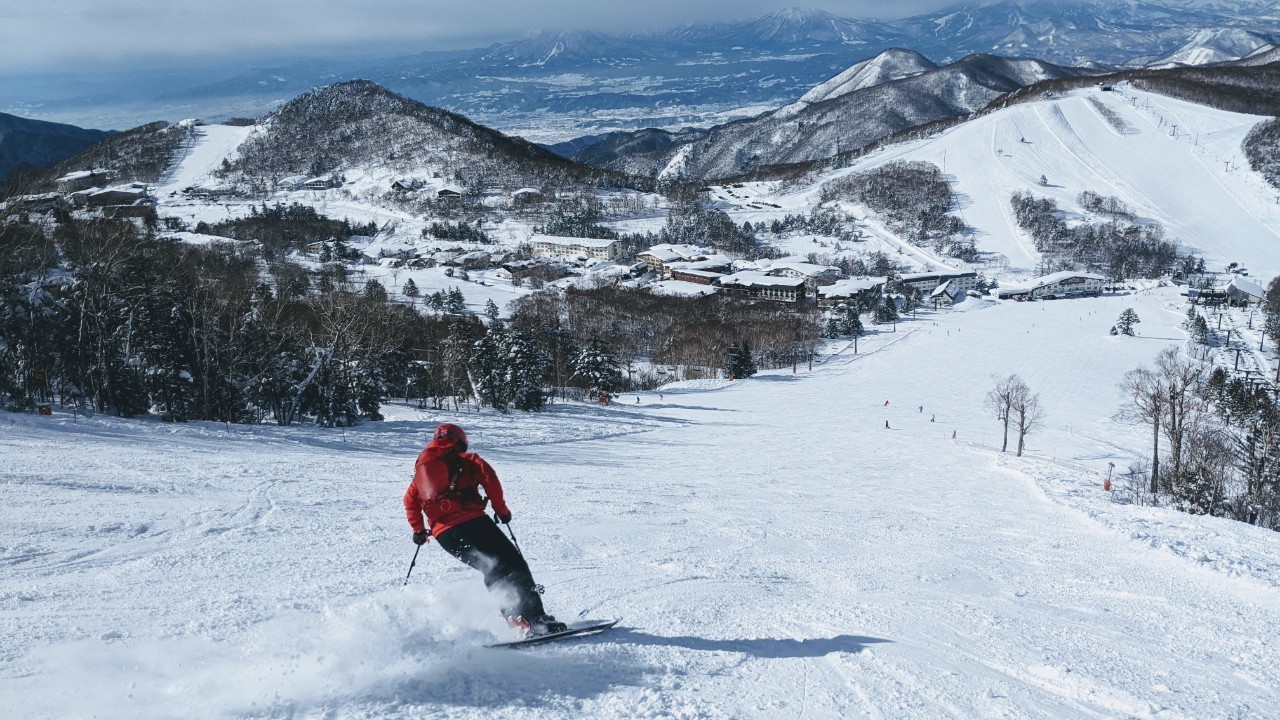
Shiga Kogen sits 45KM (1 hour drive) to the east of Nagano City and 280KM (<5 hours drive) to the northwest of Tokyo. When people talk of Shiga Kogen, they are speaking of a mountainous area that includes Shiga Kogen Ski Resort and Shiga Kogen Highlands – a UNESCO Biopshere. The areas largely overlap and sit within the even larger Joshinetsu Kogen National Park. Given the size of the area, there are several ways to approach Shiga however most visitors do so from the west, via Nagano Station. As a stop on the Hokuriku Shinkansen line, Nagano Station is easy to reach from Tokyo. Once there, express buses will take you onto the Shiga Kogen Yamanoeki (Mountain Station) – the most convenient transport hub in the area. Most famous as the largest ski resort in Japan, Shiga Kogen also boasts Nagano’s longest ski season while outside of winter, the area offers some of Central Japan’s best hiking and outdoor experiences. With the Jigokudani Monkey Park lying in the foothills of the national park, there’s plenty of reasons to like Shiga Kogen.
Area Profile & Property Types
As detailed below, Shiga Kogen is the largest ski resort in Japan and as such, covers an expansive area. Not only does it lay claim to being the largest resort in Japan, it is also reported to be the largest in Asia. Sitting within the larger expanse of Joshinetsu Kogen National Park, Shiga Kogen is reminiscent of European resorts with of its many ski runs dropping you into different valleys and ascending multiple peaks. There is no single village but instead multiple areas in which you’ll find large hotels, smaller guesthouses, lodges, restaurants and bars.
Buying property within the resort is challenging. Not only does the resort sit within a national park, local regulations inhibit or prevent the subdivision of land and construction of homes. As a result, unless you are looking to buy a hotel, ski lodge or other business, you will find it difficult to acquire land or property in Shiga Kogen. This should not however discourage from looking for properties nearby the resort. Shiga Kogen sits within the town boundaries of Yamanouchi, an area that takes in multiple hot spring towns including Yudanaka Onsen, Shibu Onsen and Kanbayashi Onsen. Yamanouchi also includes the Jigokudani Monkey Park – located at Kanbayashi Onsen – and the ski resorts of Kita-Shiga Kogen including Ryuoo Ski Park. In addition, the area is home to plenty of farmland in which you’ll find plenty of property on the market.
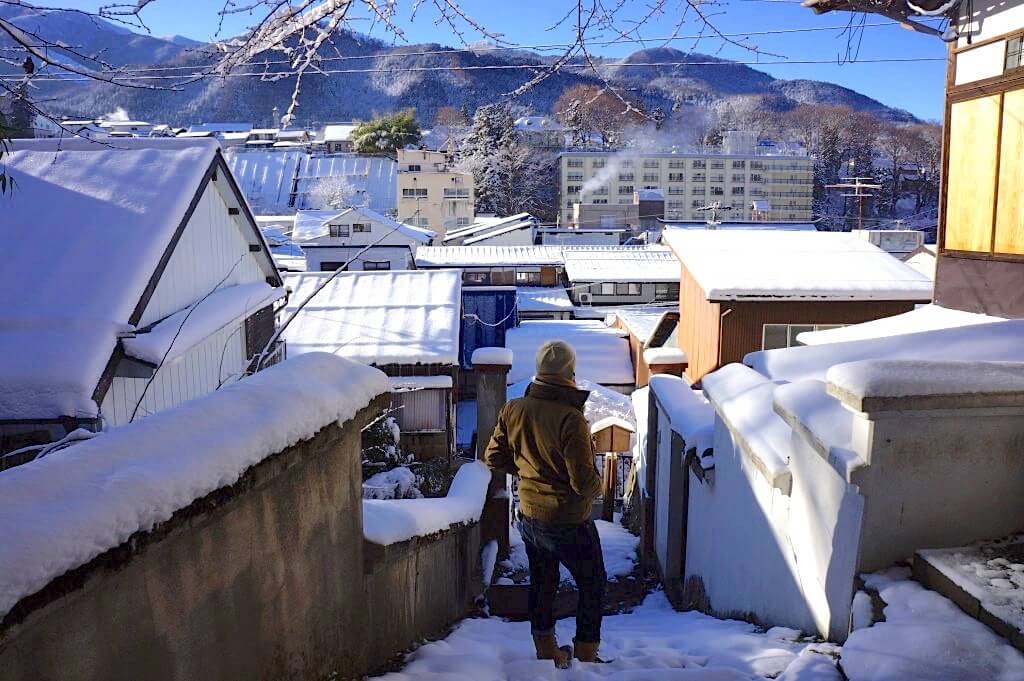
Buying in the Yamanouchi area is a good option for those looking for a cheaper deal than in Hakuba or Nozawa. There few high-end options at this time however that looks set to change with continued investment into Shiga Kogen and revitalisation of the hot spring towns around its base. Thanks to those towns and the nearby monkey park, the area attracts plenty of visitors all year round, while also being within easy reach of Nagano City. There are some good deals to be found in the area with prices relatively stagnant. Sooner or later, Shiga Kogen will come onto the radar of foreign buyers and with restrictions on property sales potentially set to change, look for growth in the market in coming years.
Resort Profile
Comprised of eighteen ski areas, Shiga Kogen is the largest resort in Japan. All but three of the areas – Kumanoyu, Yokoteyama and Shibutoge - included in the Shiga Kogen grouping are connected, totaling 425 hectares of interconnected, skiable terrain with a total combined area of over 600 hectares. In comparison, Hakuba Valley boasts over 1000 hectares of terrain however the largest connected area is 220 hectares – around half the size of Shiga Kogen.
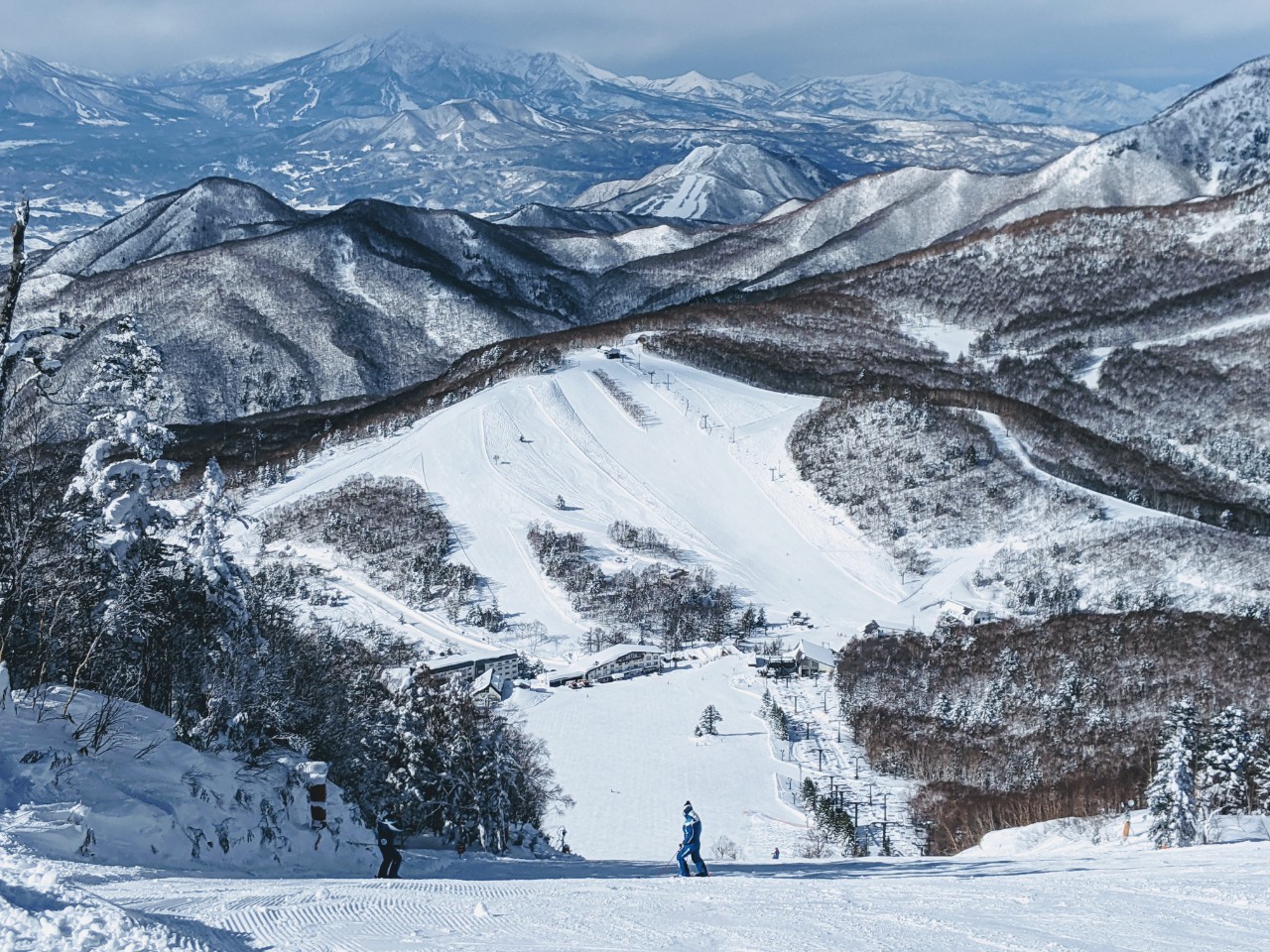
Not only is Shiga Kogen the largest resort in Japan, it is also the highest boasting the country’s highest chairlift at 2307 metres. In comparison, Hakuba Happo One has the highest chairlift in Hakuba Valley at 1831 metres while Nozawa Onsen maxes-out at 1650 metres. Shiga’s added elevation, in-land location and natural topography bless it with Nagano’s longest season, with some areas opening as early as mid-November and possibly staying open into May. The official opening is however in mid-December and you can expect the full resort to be open into April.
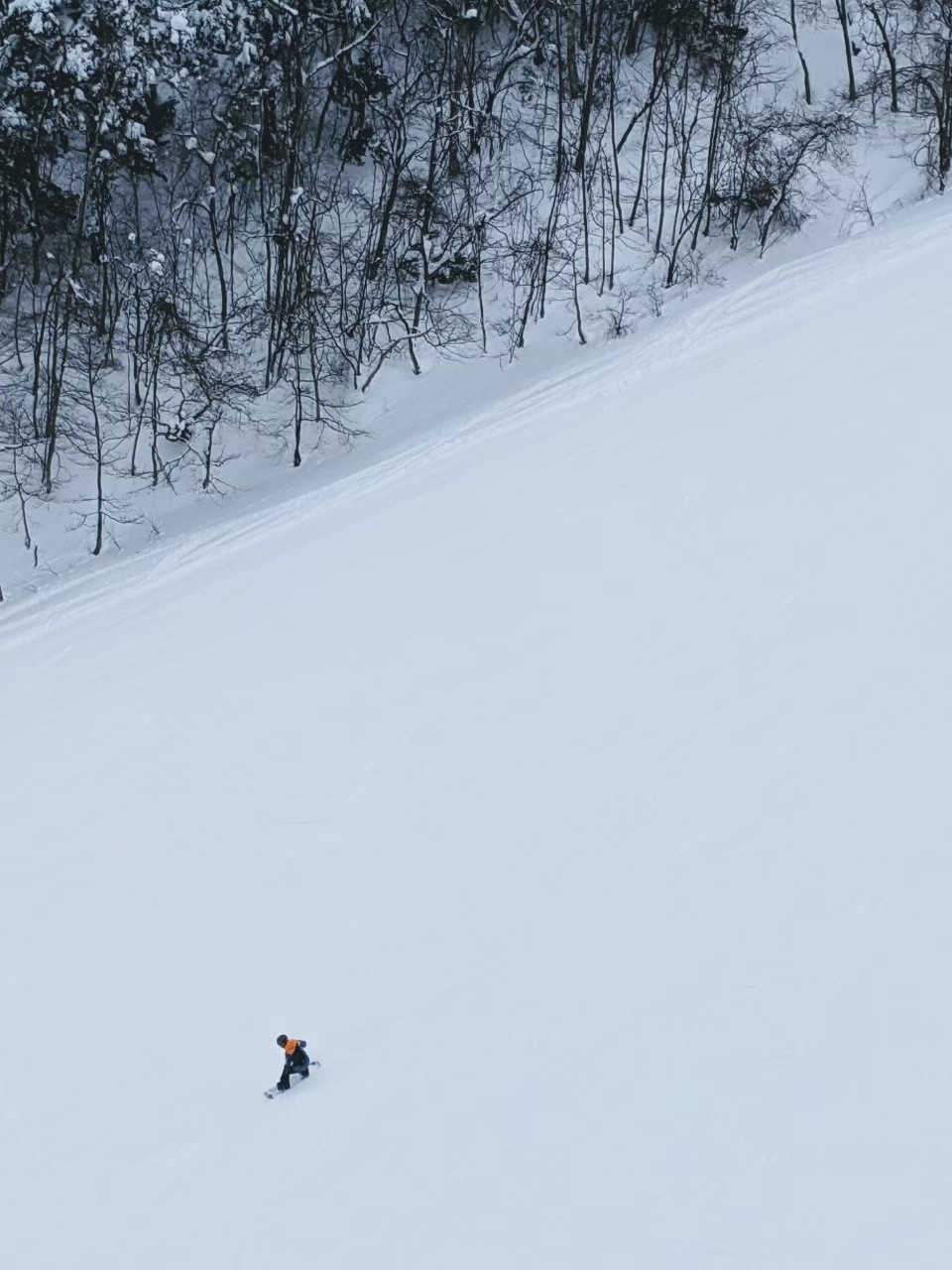
Given its size, Shiga has plenty of terrain catering to all levels including Olympic and World Cup courses used in the ’98 Games and later events. Much like Nozawa Onsen, Shiga Kogen has an official ban on backcountry, which is only permitted using a local guide. This will frustrate some but it’s for your safety.
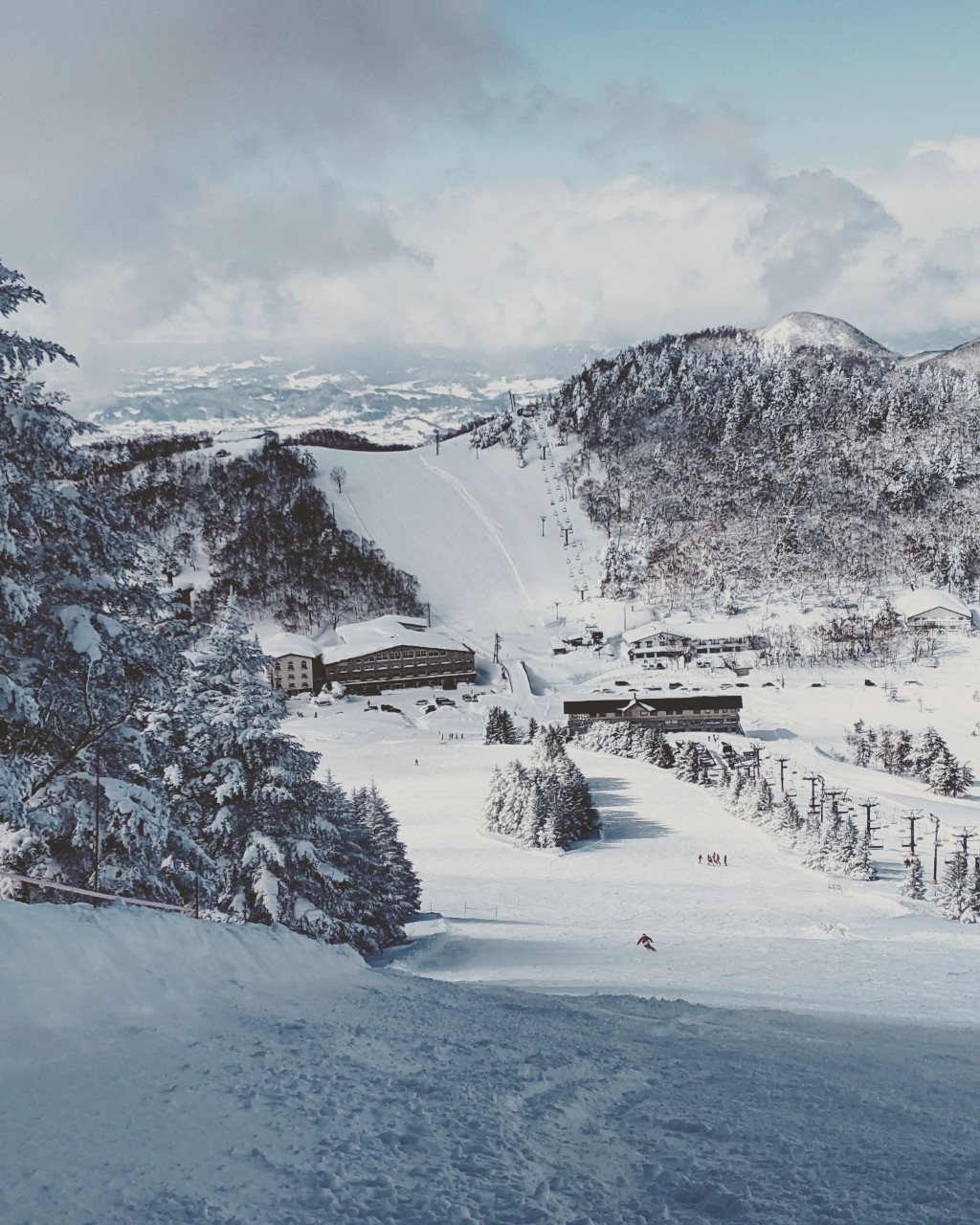
You may ask why, if Shiga Kogen is the largest resort in the country and enjoys Nagano’s season, does it not have a larger profile with international visitors? It’s largely to do with the restrictions around development and on buyers purchasing properties within the resort. The development seen in Hakuba and Nozawa over the past two decades has been driven by buyers snapping-up property and revitalising those areas – a trend that was often led by foreigner investors. Restrictions that limit the purchase of property within Shiga – for both foreign and Japanese buyers – means that revitalisation and development of the resort has not matched that of Hakuba and Nozawa, and it lacks the high-end properties and apres ski that those resorts are increasingly known for. There are however indications that those restrictions may ease as the resort seeks to attract a new market. Keep an eye on this space as should that occur, Shiga Kogen could boom overnight.
MADARAO
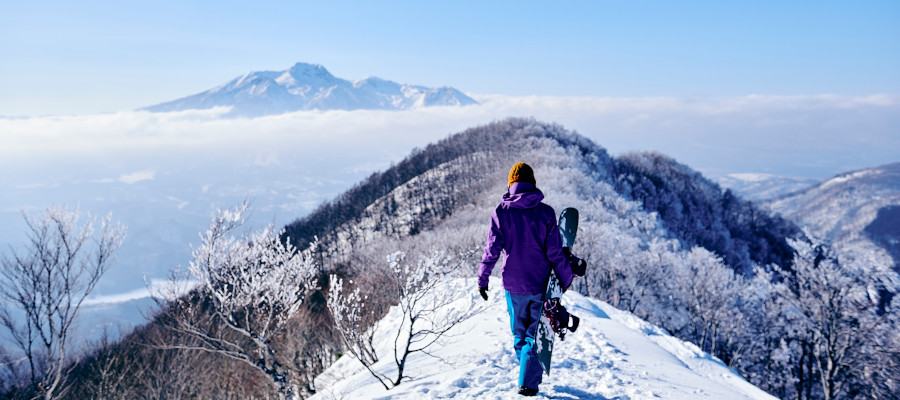
Located around 40KM or a 1-hour drive to the northeast of Nagano City and 275KM northwest of Tokyo (a 3.5-hour drive), Madarao is easy to reach thanks to its proximity to Iiyama Station. Iiyama is a stop on the Hokuriku Shikansen line running from Tokyo to Kanazawa via Nagano, making it a convenient way to move to and from Madarao via the station. Most famous for its deep snow in winter allowing for some of Nagano’s best off-piste skiing and snowboarding, Madarao is developing into an all-year-round destination as an increasing number of outdoor activities, accommodation and restaurants are popping-up each green season.
Area Profile & Property Types
Madarao is a small resort but one that wins lots of fans. Living in the shadow of its more famous neighbor of Nozawa Onsen, Madarao is overlooked by many foreign buyers but in lots of ways, it offers some of the most attractive investment opportunities of any resort in Nagano. The resort itself has much more to offer than the official numbers suggest – more about that below – and in terms of property, the market is more accessible and many ways, more attractive than nearby Nozawa Onsen.
For anyone familiar with Australian ski resorts, the layout and feel of Madarao is somewhat similar with a number of large hotels and lots of small lodges dotted around the ski fields and surrounding forest. Opportunity exists to buy established lodges and guesthouses with a number of them catering to the mid-range market. You’ll also find older places in need of renovation on the market. Prices in Madarao aren’t as high as Nozawa but the days of finding a real bargain are likely gone as overseas investment has seen large hotels and land bought-up. Expect to see some high-end properties pop-up in the near future.
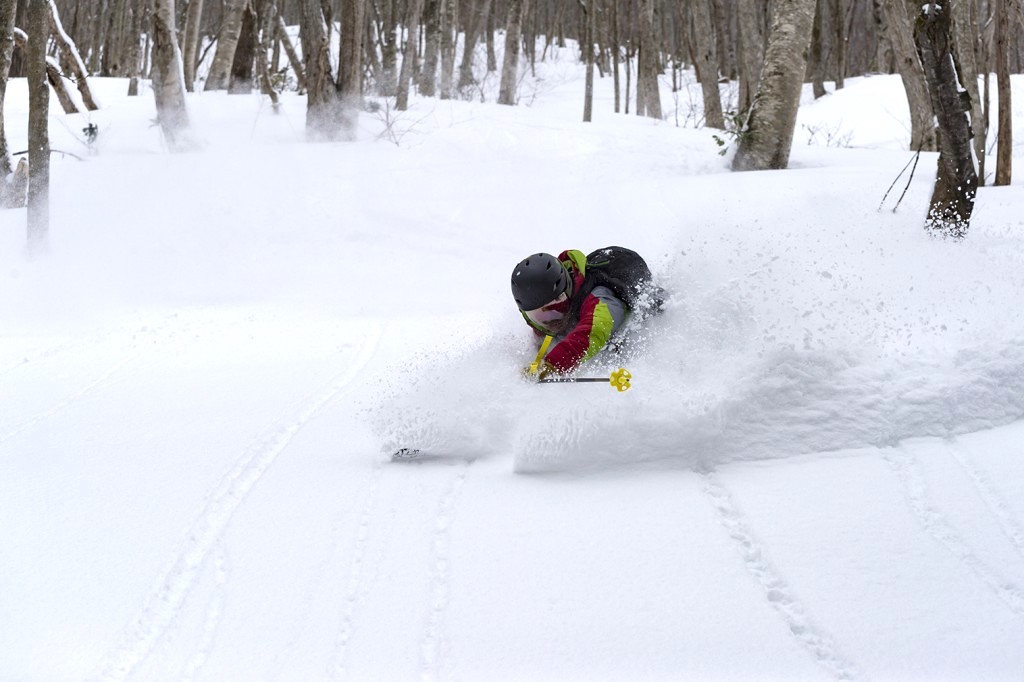
Madarao has a good mix of foreign and Japanese ownership and appears increasingly focused on enhancing its reputation as an all-year-round destination with the creation mountain-biking trails and other activities as it seeks to attract the green season market. Madarao doesn’t have a large central village but there is a small amount of nightlife. This limits its appeal for the young inbound market which in the end is probably a good thing, as those who head there tend to be focused on one thing – Madarao’s fantastic powder.
Resort Profile
Madarao Mountain Resort is a small resort but official lists 31 courses serviced by 9 chairlifts and without a gondola. It is also a relatively low resort located between 910 to 1350 metres, offering a modest 400 metres. Doesn’t sound too inspiring, right? Well, Madarao packs a much bigger punch than the numbers suggest. Firstly, 13 of its 31 courses are tree runs which take you into massive powder bowls – some of the best off-piste action in Japan. Not only that, Madarao allows backcountry – unlike nearby Nozawa – and connects to Tangram Ski Circus via its upper runs, which when combined together offer a decent amount of terrain and some of Nagano’s best powder.
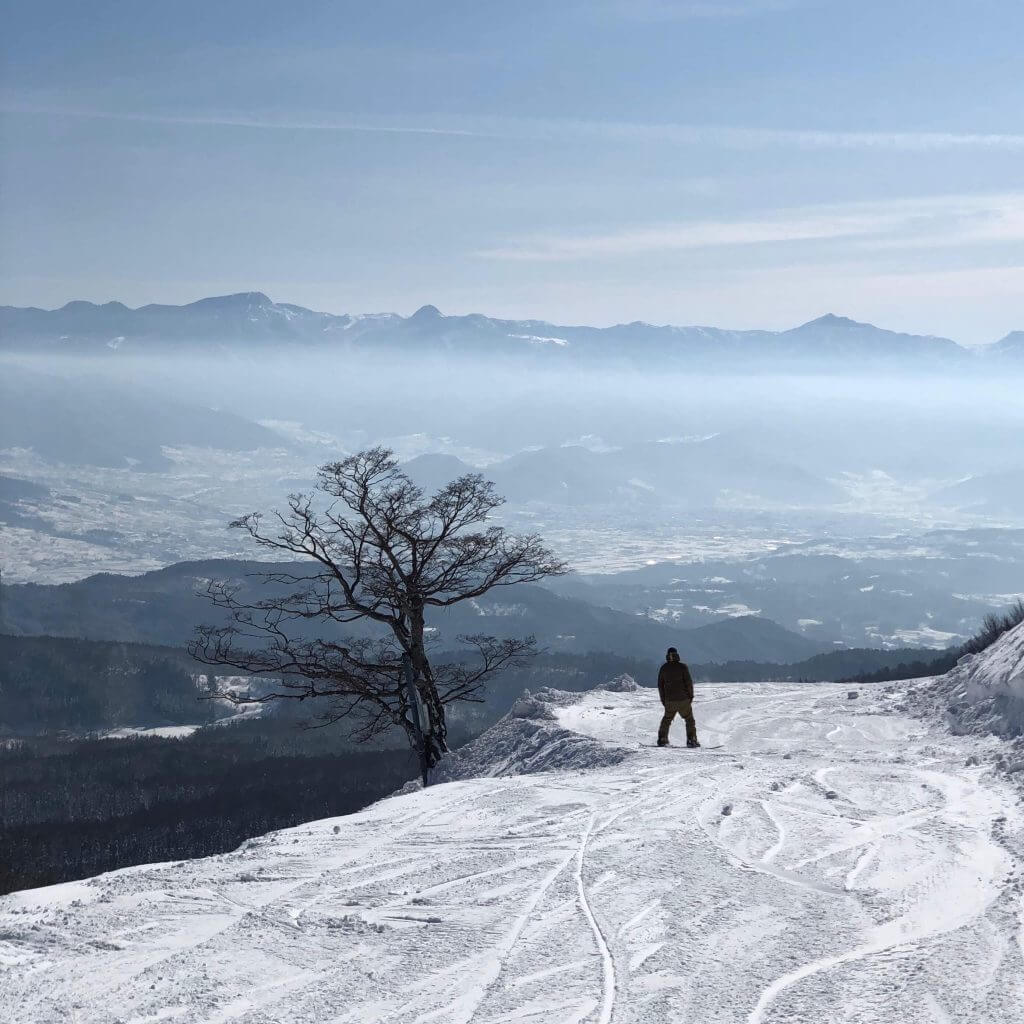
The resort has a small central area but without a compact village like Nozawa or Hakuba. This limits nightlife but in a good way, as most people headed to Madarao are focused on the powder while still being able to find a cosy bar or restaurant at night. With plenty of foreign owners in Madarao focused on developing the resort, this could well change over coming years with a likelihood of more high-end options popping-up but ultimately, Madarao’s layout and character means that it is unlikely to be over-developed and the resort should retain its current atmosphere for some time yet.
TOGAKUSHI
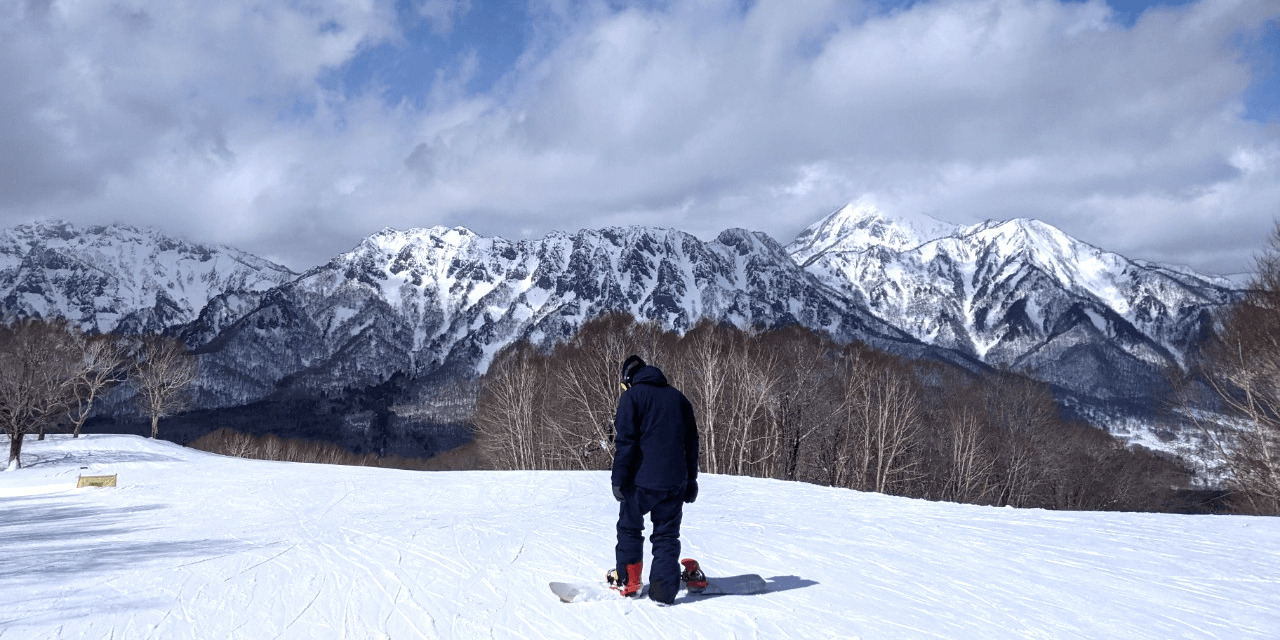
Togakushi is a forested alpine area that takes its name from Mount Togakushi (1904m), which rises above the village and surrounding landscape including its picturesque ski resort. Togakushi Ski Resort is located around 25KM / 50-minutes drive from Nagano Station. Technically within the boundary of Nagano City, it is the nearest ski resort to the station. Togakushi village has an average elevation of around 1200 metres above sea level, blessing it with a cool climate through spring, summer and autumn, and very cold winters. Nestled within the larger Myoko-Togakushi Renzan National Park, Togakushi covers a wide area and boasts some of Japan’s most important Shinto shrines, beautiful walking trails, abundant flora and fauna, in addition to the resort.
Area Profile & Property Types
Set against the spectacular scenery of Mount Togakushi, the forests and villages of the area are home to the Togakushi Shrine complex, traditional ‘shukubo’ (temple lodgings), a historic school of ninjitsu, farmlands producing Togakushi’s renowned ‘soba’ (buckwheat noodles) and local craft culture. Local, authentic and offering all-year-round appeal, Togakushi is something of a hidden gem with some beautiful traditional buildings and businesses on the market.
There are few to no high-end properties in Togakushi, with the area best-suited to buyers looking to purchase a cheaper property and renovate, or vacant land for a new build. Togakushi is an area that you can still find ‘kominka’ (traditional farmhouses) with a good amount of land and often, fantastic views of the surrounding mountains. The local community is proud of what they’ve got and they want to protect it, meaning that Togakushi is also best-suited to buyers looking to relocate to Nagano and be part of a community, rather than those seeking a holiday home.
Resort Profile
Togakushi Ski Resort flies under the radar for international visitors with very few ever venturing to this distinctively local and attractive little resort. Located within the boundaries of Nagano City, Togakushi can be accessed from Nagano Station using local bus services or taxis. One of the more picturesque resorts in the region – on clear days you’ll have fantastic views of the surrounding mountains – Togakushi is well-suited to anyone wanting to escape the international feel and crowds of Hakuba and Nozawa Onsen and enjoy a distinctly Japanese winter adventure.
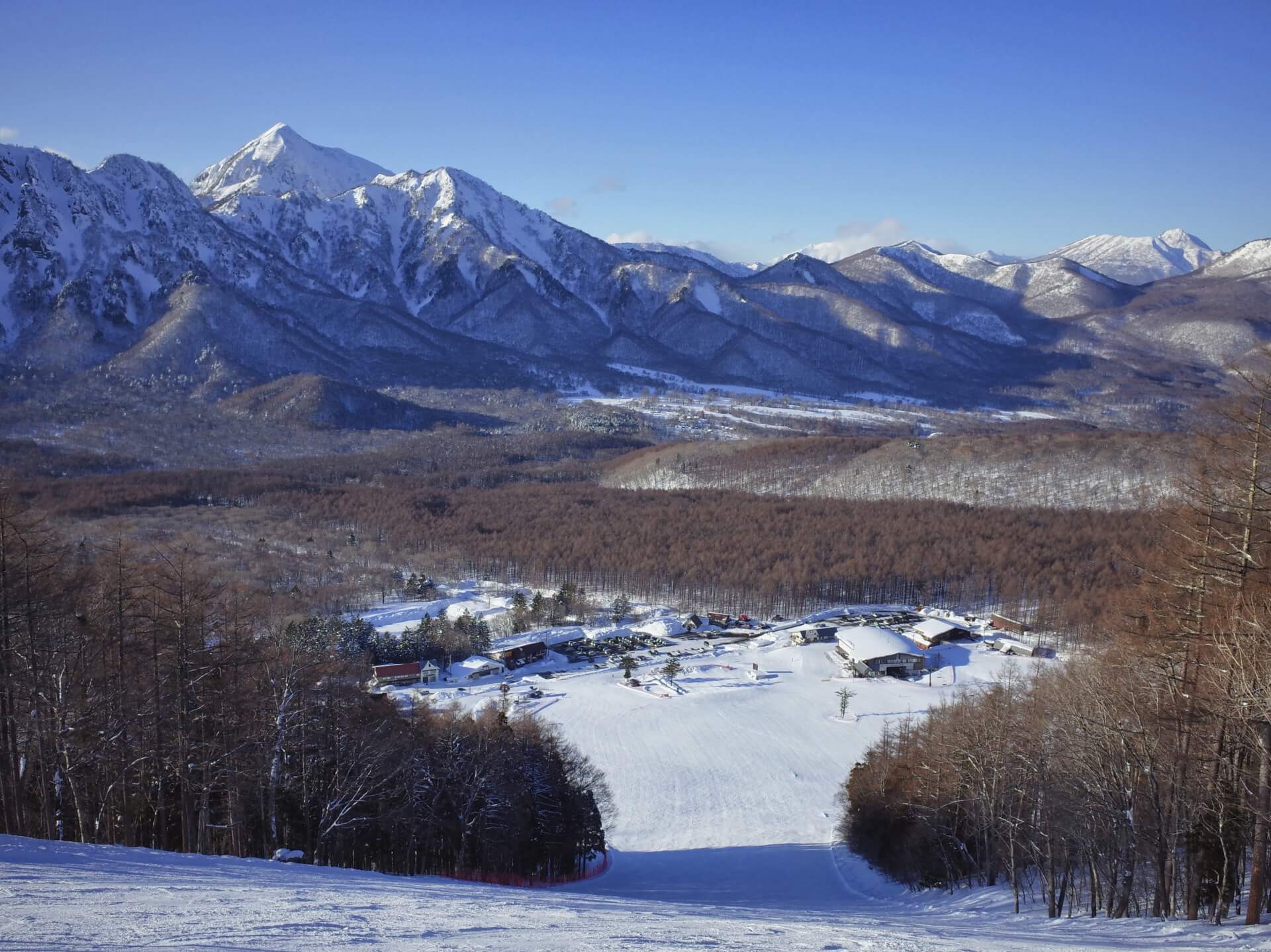
In terms of numbers, the resort offers 58 hectares of terrain across 19 ski runs and serviced by 7 chairlifts. Located between 1300 to 1749 metres, Togakushi has a modest 548 of vertical and doesn’t receive the huge powder of some other Nagano resorts thanks to its inland location, however its higher elevation means that the snow stays in good condition with the area experiencing very cold temperatures. Within easy reach of the resorts of Myoko Kogen, Togakushi doesn’t have the profile of Hakuba, Nozawa or Shiga Kogen however those who venture there tend to love it.
MYOKO KOGEN
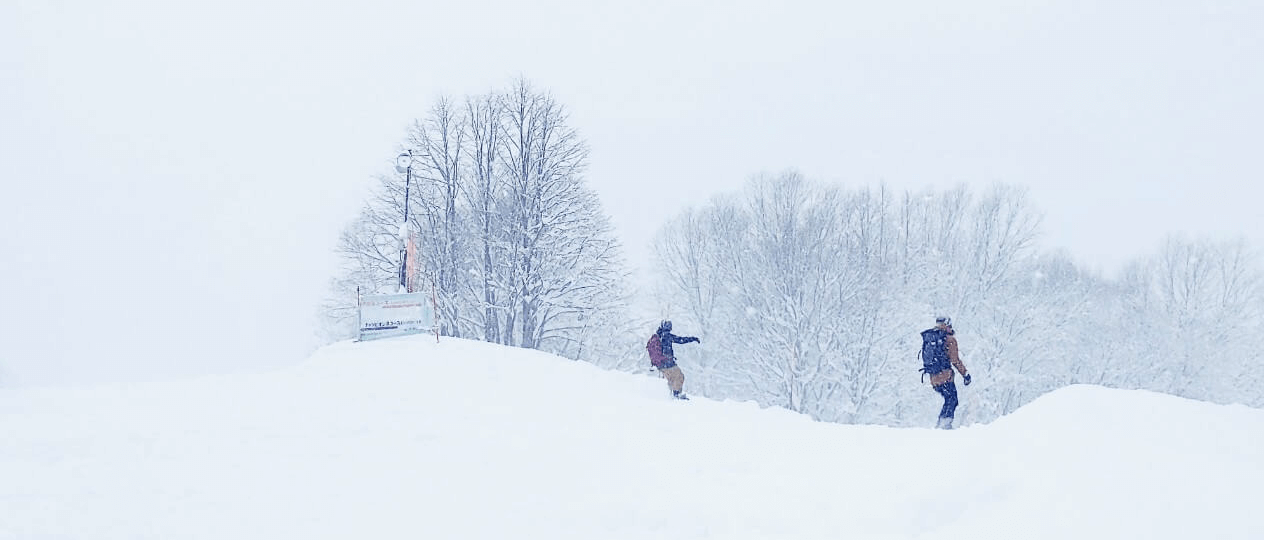
Located approximately 30KM (<1 hour drive) directly north of Nagano City and 285KM (3.5 hours drive) to the northwest of Tokyo, the area collectively referred to as ‘Myoko Kogen’ refers to multiple ski resorts within close proximity of each other. The resorts of Akakura Onsen, Akakura Kanko, Ikenotaira, Suginhoara and Seki Onsen offer some of Japan’s deepest snow and best backcountry, with some people also including Lotte Arai within this group (although its located further to the north). The area is serviced by two train stations. Joetsu-Myoko Station is a stop on the Hokuriku Shinkansen line running from Tokyo to Kanazawa and the smaller Myoko-Kogen Station. While Myoko-Kogen Station is not a shinkansen station, it is the most convenient option for visitors heading to the main ski resorts. Most famous for the huge snow that falls on the region each winter, the resorts of Myoko line on the eastern boundary of Myoko-Togakushi Renzan National Park. Boasting multiple mountain peaks, lush forests and a unique array of flora and fauna, the park is a fantastic all-year-round destination within easy reach of Nagano, Tokyo and beyond.
Area Profile & Property Types
The grouping of ‘Myoko Kogen’ refers to five resorts located around the base of Mount Myoko. It’s not uncommon to hear people talk about more than five but officially, the five resorts of Myoko are Akakura Onsen, Akakura Kanko, Ikenotaira, Suginohara and Seki Onsen - more on each of those below. Akakura Onsen and Akakura Kanko are connected to each other – combining to offer the largest ski fields in Myoko – and to the hot spring village of Akakura Onsen. This area offers the largest concentration of guesthouses, restaurants and bars in Myoko with plenty of small lodges dotted around the area and nearby resorts of Ikenotaira, Suginohara and Seki Onsen.
While often grouped with Nagano resorts due its close proximity to them and access via Nagano Station, Myoko Kogen actually lies in southern Niigata Prefecture. As such, it doesn’t enjoy the profile of Hakuba, Nozawa and Shiga nor are its properties in such high demand. There are few high-end options in Myoko Kogen at this time while Akakura Onsen and the surrounding resorts are in need of revitalisation.
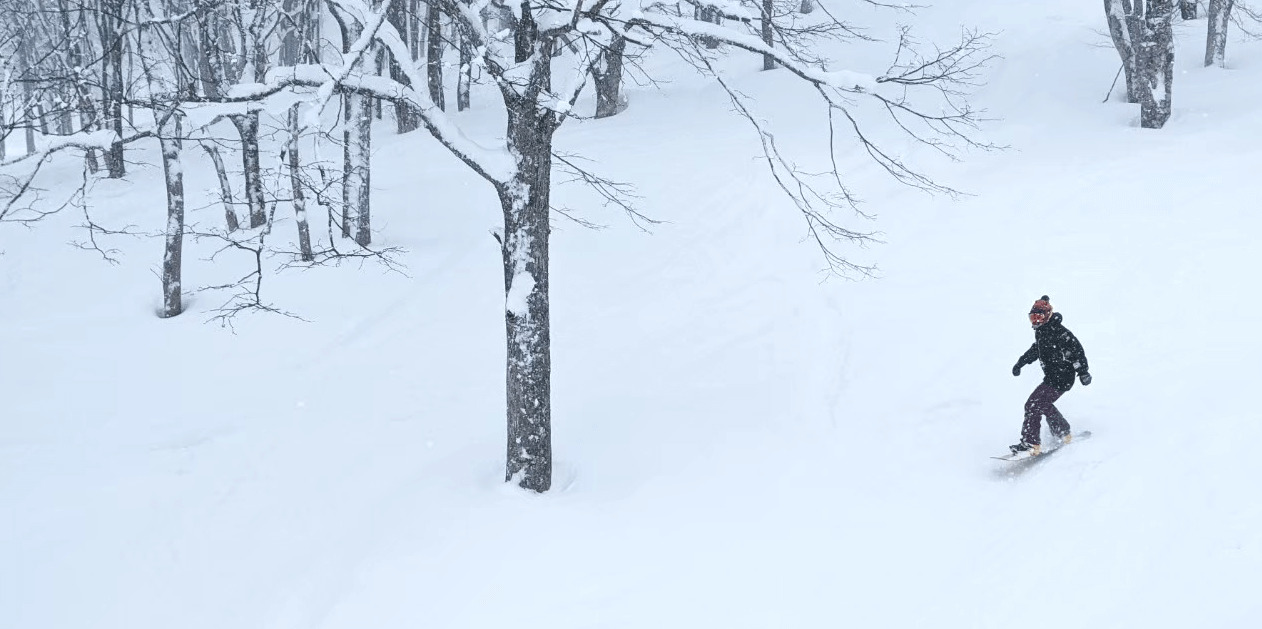
In that regard, Myoko Kogen offers some of the best investment opportunities for buyers looking to get into a market relatively cheaply with huge opportunity for growth. Existing properties and vacant plots are easy to come by in Myoko, at prices much lower than Hakuba, Nozawa, Shiga and Madarao. Myoko’s huge annual snowfall – more on that below – almost guarantee that sooner or later its profile will boom and should we see investment into the resorts themselves, Myoko Kogen has the potential to rival the more popular resort areas of Nagano. The opening of Lotte Arai Resort in 2017 – one of the few resorts in Japan catering to the high-end market – is a signal of that intent. Without the restrictions on buying property that applies to Shiga Kogen, Myoko Kogen is likely the next resort area to develop quickly.
Resort Profiles
The grouping of ‘Myoko Kogen’ refers to five resorts located around the base of Mount Myoko, on the edge of Myoko-Togakushi Renzan National Park. When talking about Myoko Kogen, some people choose to include other resorts in the grouping including Lotte Arai Resort however most accurately speaking, it refers to the following five resorts:
Akakura Onsen Ski Area is the largest resort in Myoko, serviced by the village of Akakura Onsen The resort has 17 courses serviced by 14 lifts and situated between 650 to 1200 metres, offers a modest 550 metres of vertical. Akakura Onsen connects to Akakura Kanko Ski Resort, offering another 10 courses serviced by 6 lifts and 1 gondola. Situated between 740 to 1500, Akakura Kanko offers a more appealing 760 metres of vertical and when combined together the two resorts offer a decent amount of terrain. But the real attraction at these resorts is the powder. All of the Myoko resorts receive a huge amount of powder each winter and all of them allow backcountry making them popular with advanced skiers and snowboarders.
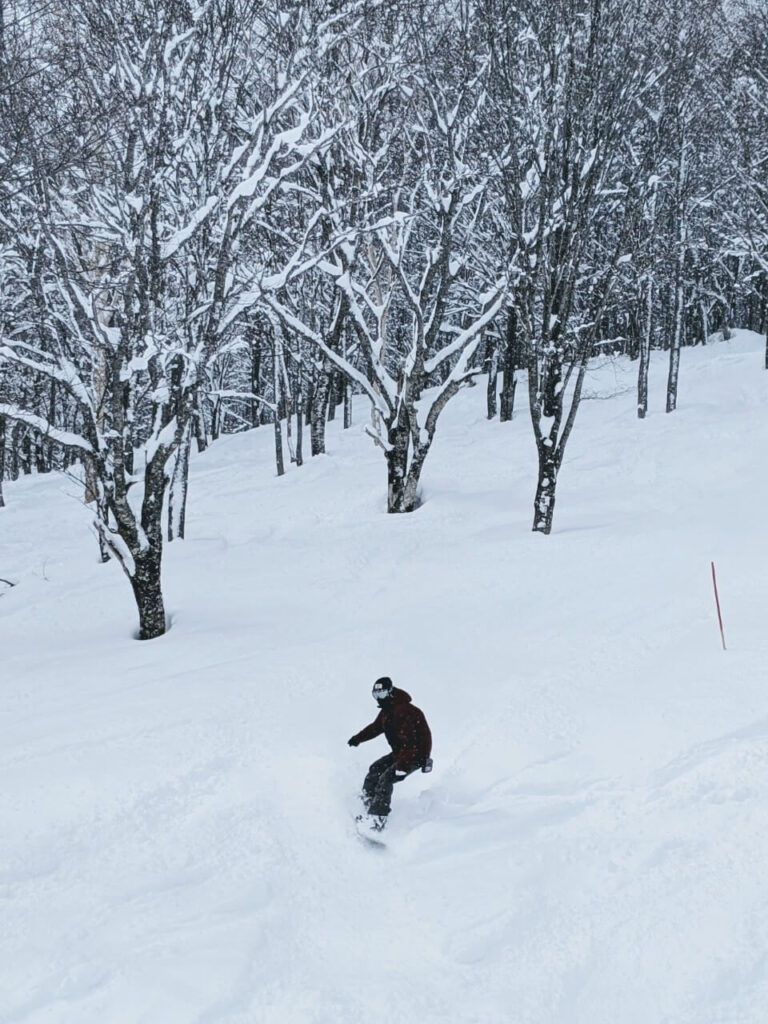
Neary Ikenotaira Ski Resort is small resort – 10 courses serviced by 6 painfully slow chairlifts / 760 to 1500 metres – but again offers decent vertical of 740 metres and has some fantastic tree zones to the sides of the runs. Also nearby, Myoko Suginohara Ski Resort offers 16 courses serviced by 4 lifts and 1 gondola and rises to 1855 metres, higher than any resort in Hakuba. It offers an impressive 1124 metrse of vertical and boasts one of Japan’s longest ski runs at 8.5km.
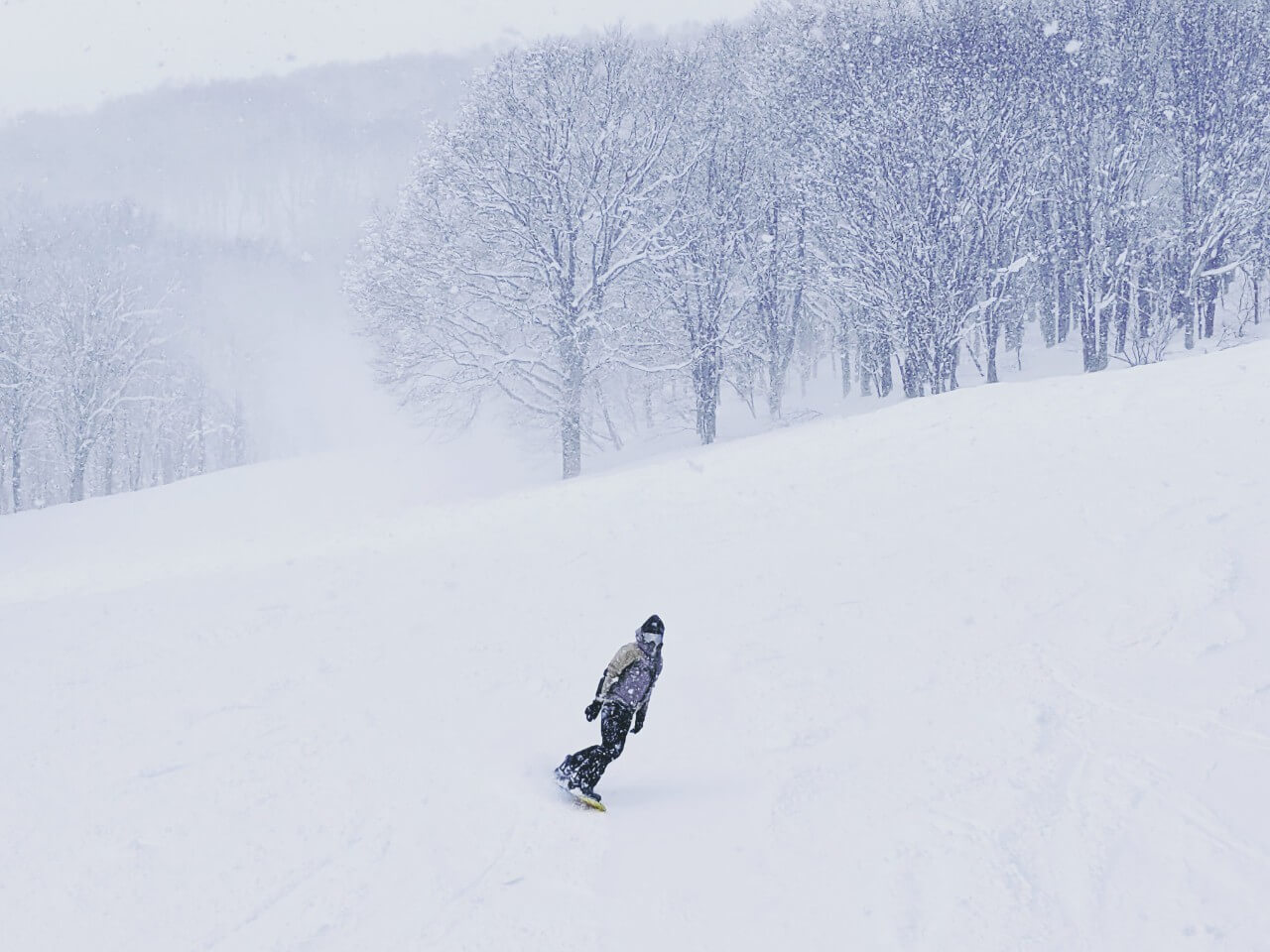
Finally, the small family-run Seki Onsen Ski Area has only 4 courses and 2 lifts, and located between 900 to 1210 offers an unimpressive 310 metres of vertical. However, most of the fields are left ungroomed and blessed with massive powder each winter, Seki Onsen is basically a powder park – the stuff dreams are made of.
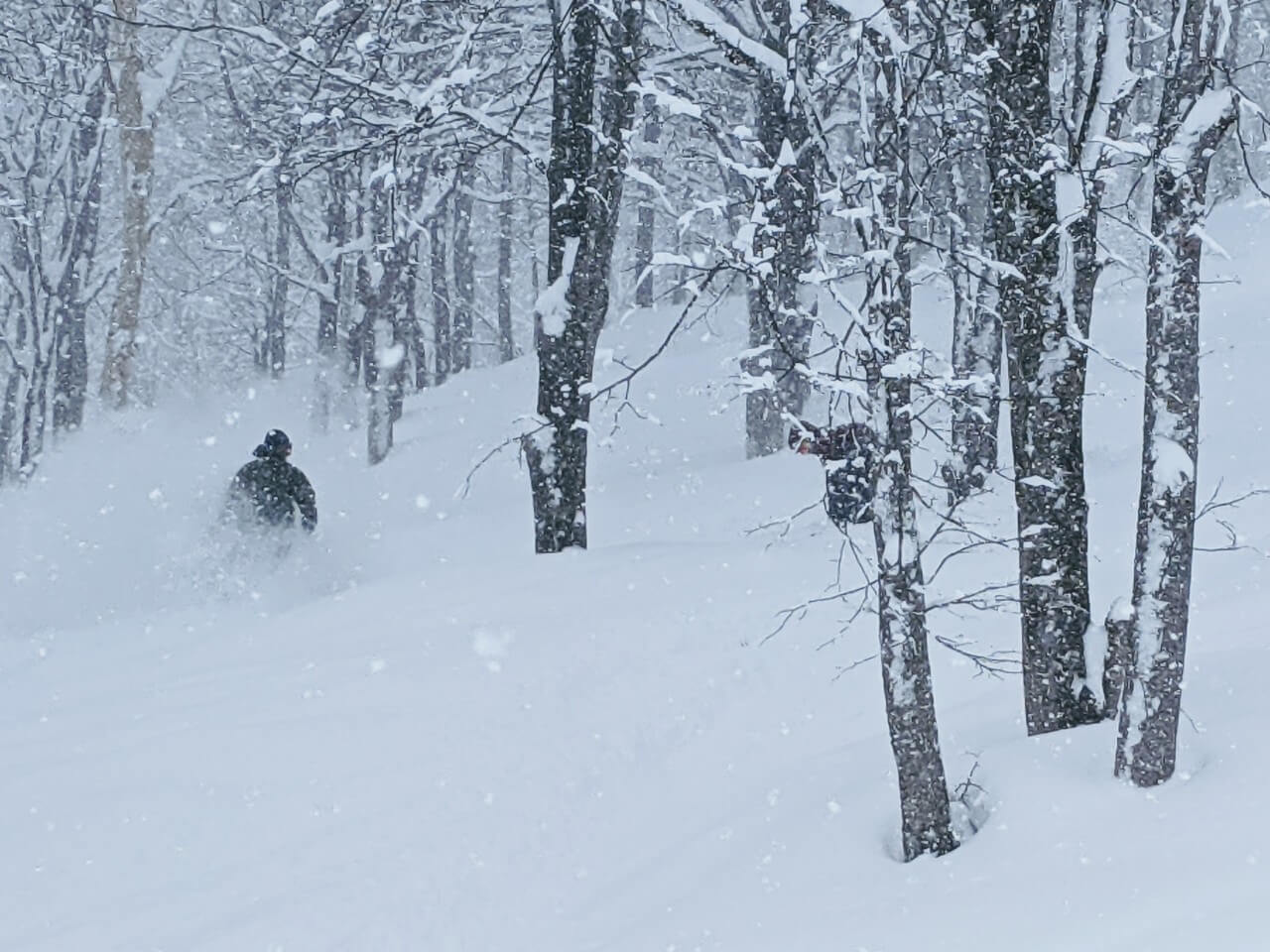
Given their location near the coast, all of the resorts of Myoko Kogen receive huge snowfall and sit within 30 minutes drive of each other, with several only being 10 to 15-minutes apart. They are yet to enjoy the development of the resorts of Hakuba and Nozawa and much of their infracture is in desparate need of upgrade, however that lack of development means you rarely get the crowds of Hakuba and Nozawa and if you want to enjoy some truly deep powder without restrictions on backcountry, Myoko Kogen just might be for you.
YUZAWA
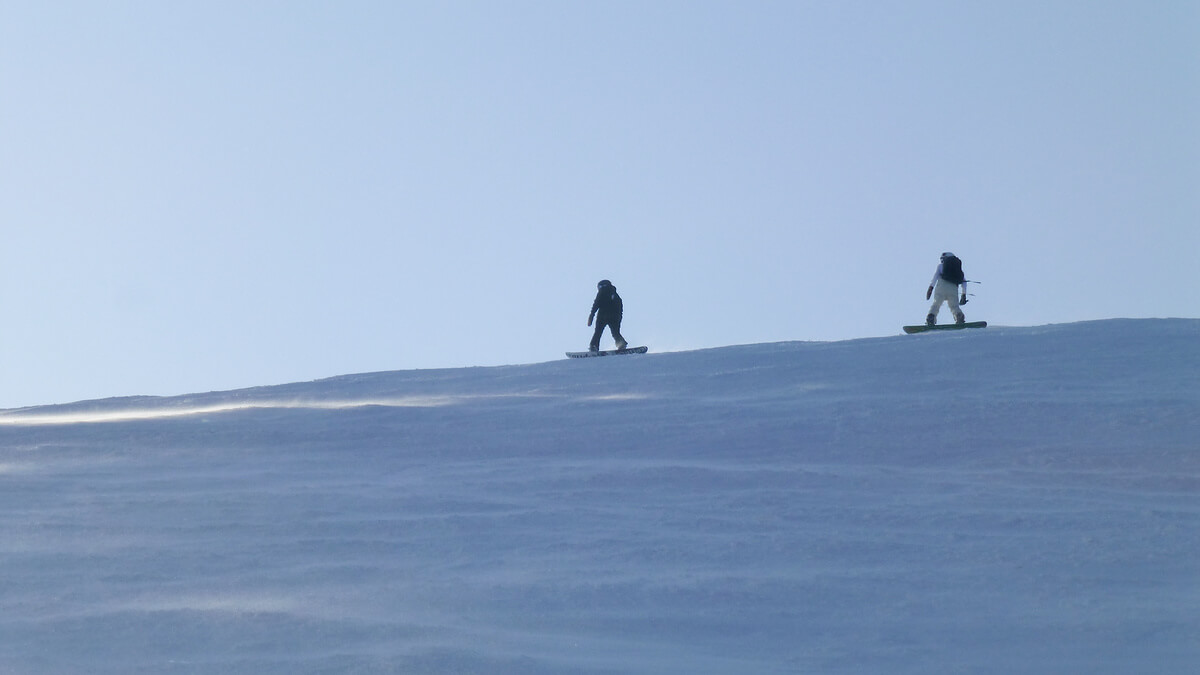
The hot spring town of Yuzawa is located in Niigata Prefecture, around 180KM (3.5 hours drive) from central Tokyo. The Joetsu Shinkansen line running from Tokyo Station to Niigata Station includes a stop at Echigo-Yuzawa Station, around which the town is spread-out, making it easy to reach from the capital. While the town is one of Japan’s most famous ‘onsen’ (natural hot spring) towns, in recent decades it has become best known as one of the ski areas most accessible from Tokyo including Gala Yuzawa (a resort with its own shinkansen station). The nearby resorts of Naeba and Kagura arguably offer the best skiing and snowboarding in the region, with Naeba also hosting Japan’s largest music festival, Fuji Rock, every summer. Echigo-Yuzawa Station also acts as the north-eastern gateway to Joshinetsu Kogen National Park with destinations including Mount Naeba and Mount Tanigawa lying within its boundaries.
Area Profile & Property Types
Readily accessible using the Joetsu Shinkansen Line running from Tokyo to Niigata City, the resorts in and around Yuzawa are popular with Tokyoites due to their accessibility. As such, the area attracts plenty of buyers looking for a ski property within easy reach of the capital. Property prices are typically lower than in and around the popular resorts of Nagano while being just as easy to access from Tokyo and its airports.
It’s a large area including multiple resorts making it a hunting ground if you’re flexible about the exact location of a property. The boom years of the ‘Bubble Economy’ have left Yuzawa somewhat spoiled by large hotels and apartment towers, however with those heady days now long behind it, Yuzawa offers good value for buyers. While the region lives in the shadow of Nagano and Niseko/Hokkaido, expect more people to discover Yuzawa in the coming years and property to start being snapped-up.
Resort Profiles
Bordering Nagano Prefecture to the north, Niigata is home to around fifty ski resorts known for their deep powder. Located closer to the coast than the resorts of Nagano, Niigata typically receives earlier and heavier snowfall and lays claim to some of the deepest powder in the world. Nagano-aficionados will tell you that Niigata’s snow is wetter and not as good however those in Niigata will boast about how much they have and tell you, people in Nagano are just envious!
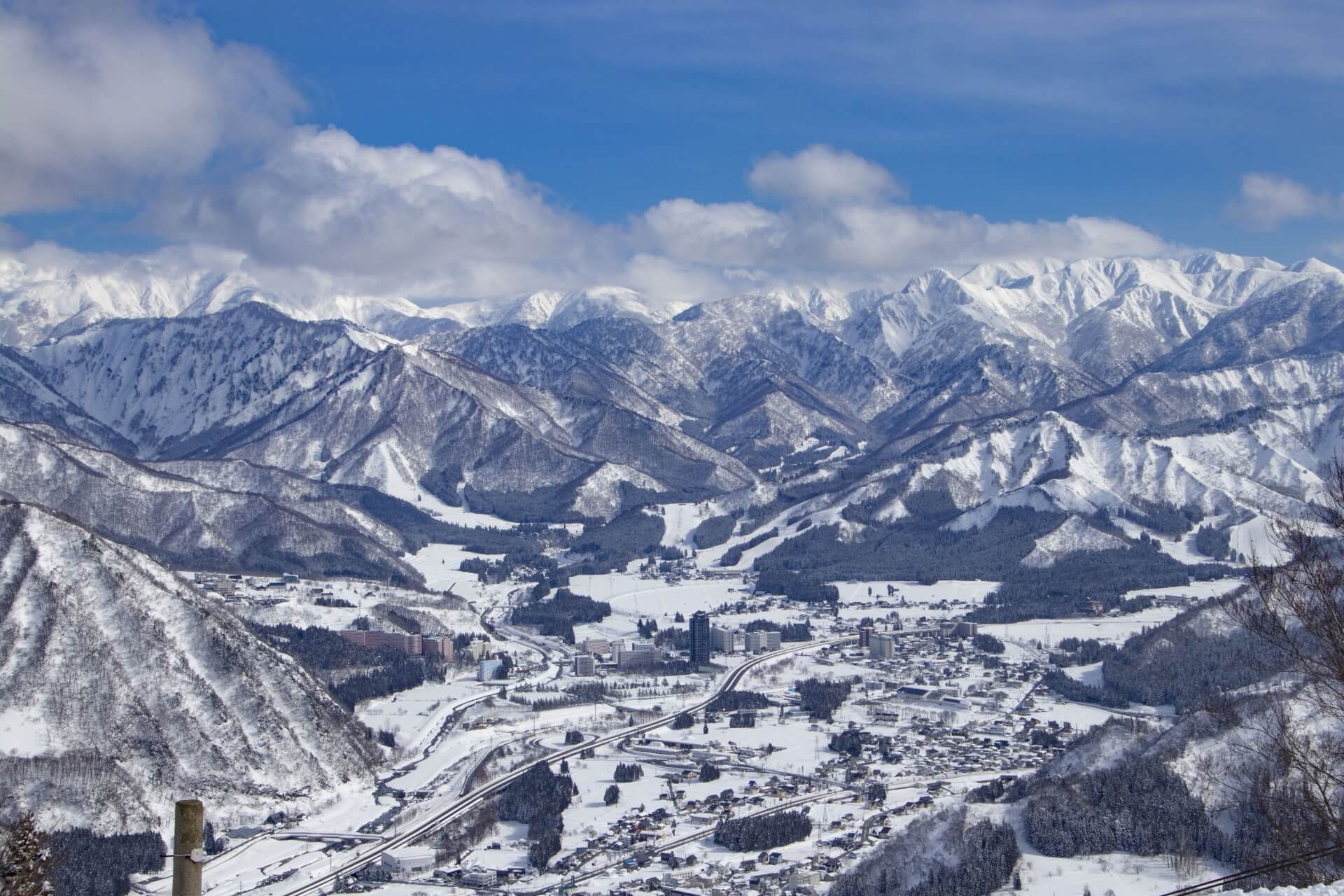
Gala Yuzawa is the most accessible resort using the Joetsu Shinkansen from Tokyo. That convenience means its often crowded on weekends and holidays, popular with Tokyoites visiting on package deals and not that well-suited to most international skiers and snowboarders. Around 15 minutes drive from Echigo-Yuzawa Station, Kagura Ski Resort and the connected Naeba Ski Resorts offer the best all-round action in the area including excellent backcountry. Kagura offers 170 hectares of on-piste action while Naeba offers just under 200 hectares. Connected via the very long ‘Dragondola’ gondola, the two resorts win plenty of fans while we also recommend looking around the less-known but true powder paradise of Muikamchi Hakkaisan.
KARUIZAWA
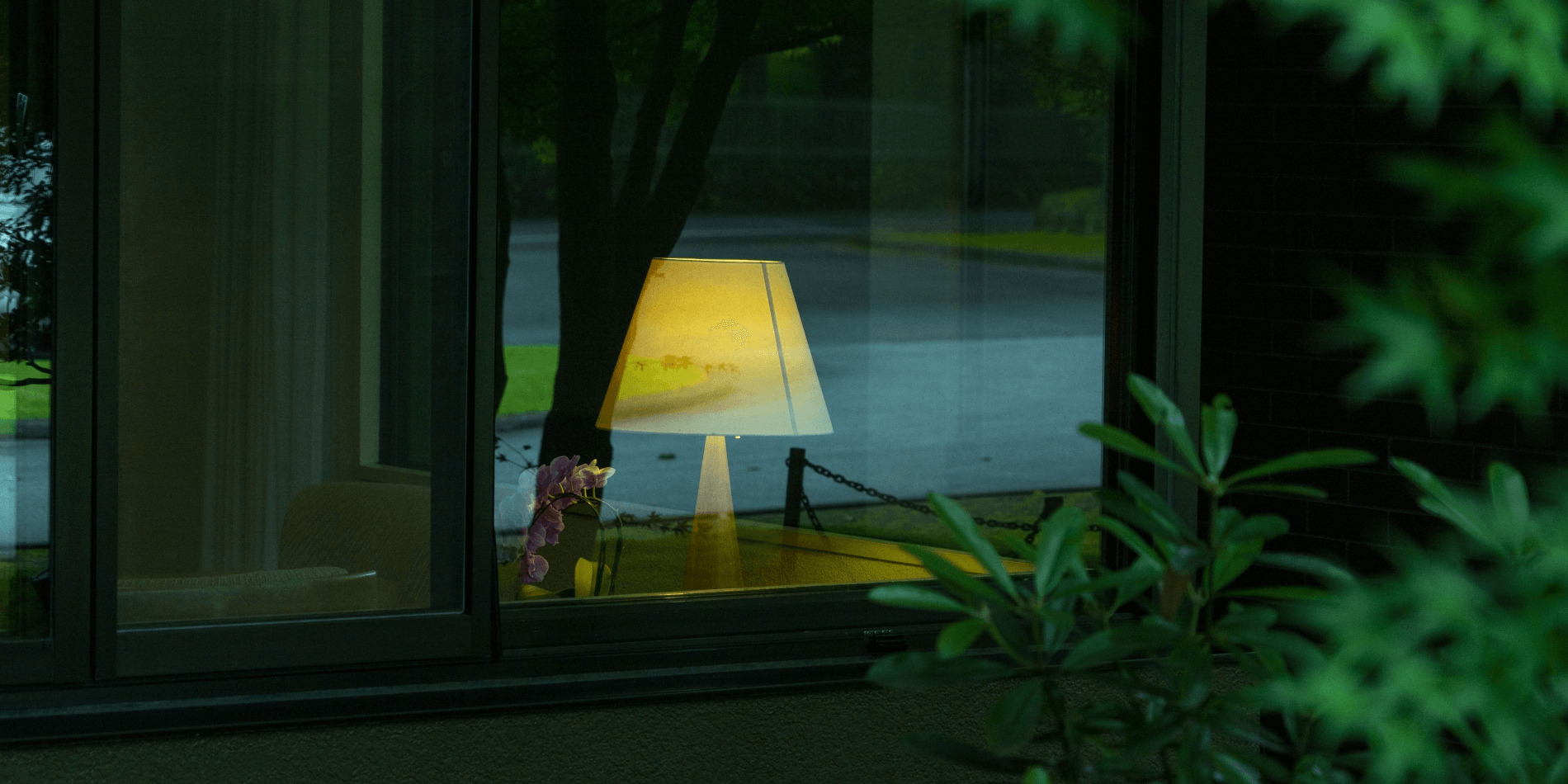
Karuizawa is located around 70KM / 1.5 to 2-hours to the south-east of Nagano and 170KM / 2.5-hours drive to the north-west of Tokyo. As a stop on the Hokuriku Shinkansen line, Karuizawa Station is most easily reached using the train from Nagano or Tokyo – taking around 30-minutes and 65 to 75-minutes respectively, from those staring points. Karuizawa sits around 1000 metres above sea level, blessing it with a cool alpine climate and welcome escape from the heat and humidity of summer. As such, Karuizawa is one of Japan’s most popular resort towns with many Tokyoites heading there for holidays or day-trips from the capital. The town boasts some excellent hotels and guesthouses, restaurants and cafes, shopping, museums and galleries and sits within easy reach of Joshinetsu Kogen National Park and one of Japan’s most famous hot spring towns, Kusatsu Onsen.
Area Profile & Property Types
Karuizawa stands-out from the other resort areas on this list due to its reputation as an all-year-round mountain resort town, famous for its celebrity residents, high-end accommodation, dining and shopping in conjunction with a small ski resort and lots of other reasons that make it one of Japan’s most famous resort towns. Serviced by the Hokuriku Shinkansen, Karuizawa is quick and easy to reach from central Tokyo and located around 1000 metres above sea level, it enjoys a notaby cooler climate than the capital – a big reason it has long been used a summer retreat to escape the heat and humidity.
Karuizawa offers plenty of high-end properties with prices to match. For many Japanese, owning a property in Karuizawa is a statement of status above anything else as they seek to escape the heat and hustle of Tokyo while enjoying the finer things in life. Through 2020 and 2021, Karuizawa and Hakuba are the only two areas in Nagano to have seen property prices rise, as interest in buying in the already popular areas has surged. The trend is set to continue with Karuizawa properties likely to continue increasing in value over coming years.
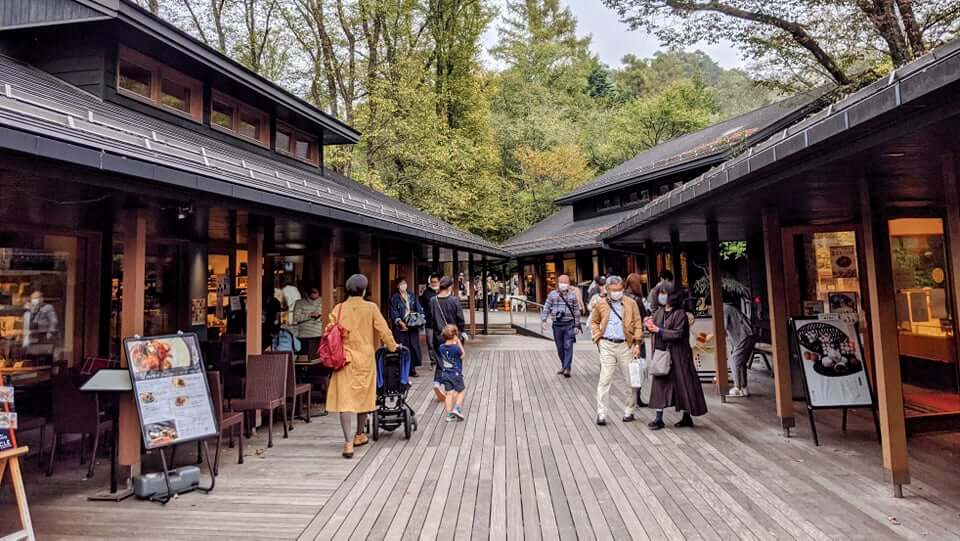
The town can be roughly divided into two areas: the Old Ginza / Kyukaruizawa area to the north of Karuizawa Station along with the Naka-Karuizawa Area around the station of the same name. Property prices across Karuizawa are high – think in terms of Tokyo property prices – and the market is competitive. While it is not cheap or easy to buy into the market, should you do so you’ll be making an investment in one of Japan’s premier and most famous resort towns.
Resort Profile
Karuizawa Prince Hotel Snow Resort lies within 5-minutes of Karuizawa Station, making it a popular destination due to its ease of access. The resort is small, offering only 30 hectares of terrain over 10 ski runs and offering a tiny 215 metres of vertical. Snow conditions are unreliable given its inland location and the resort is mostly popular with beginners, families and those looking for a ski resort easy to access from Tokyo. While the resort can experience heavy snow, it is one of the few resorts in Nagano to rely on snow-making equipment. As such, it advertises quite a long season, from November until March, however if you're visiting in the early or late season, expect to be skiing and snowboarding on entirely artificial snow.
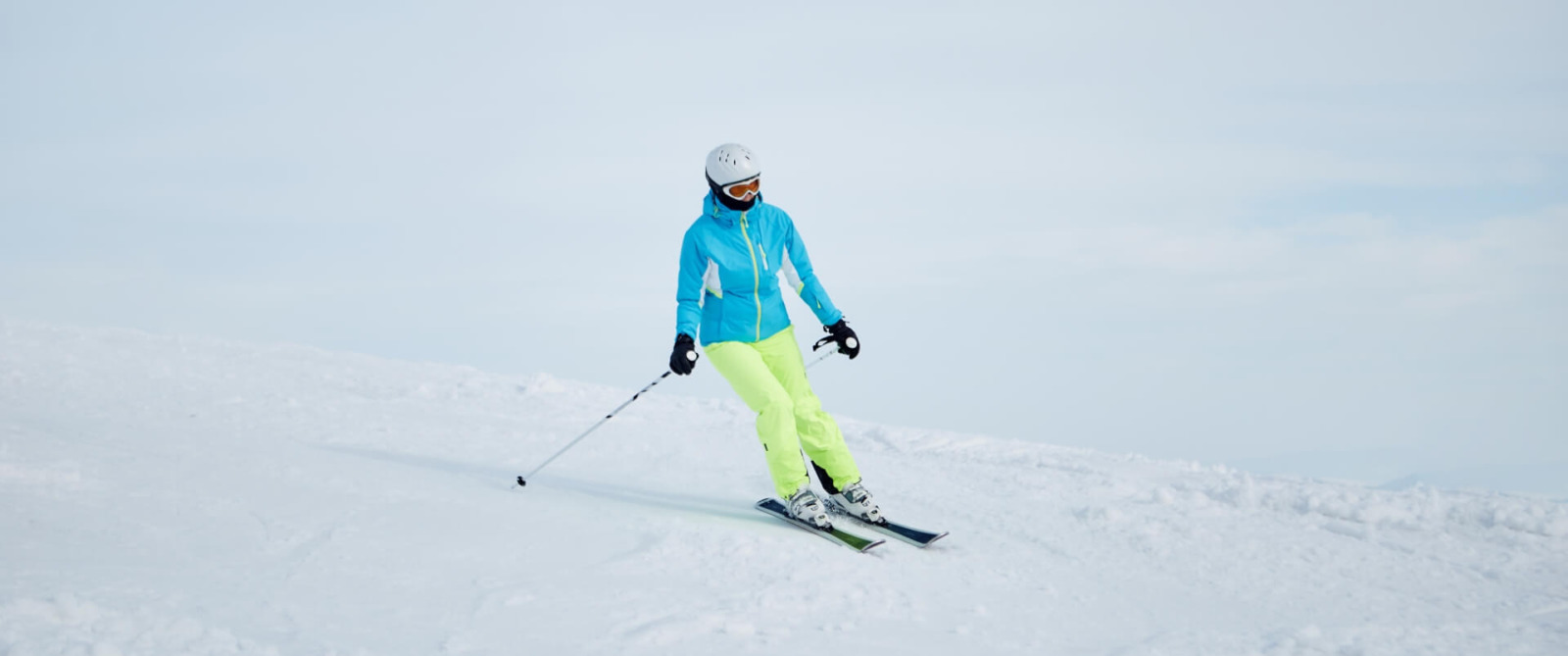
If your priority is to buy a property in close proximity to a good resort, then Karuizawa isn't for you. Any intermediate to advanced skiier / boarder will quickly become bored there, and the use of artificial snow is disappointing given Japan's reputation for big powder. However, if you're in the market for a high-end property in a resort town that offers more than just skiing, then Karuizawa has to be considered.
PROPERTY LISTINGS
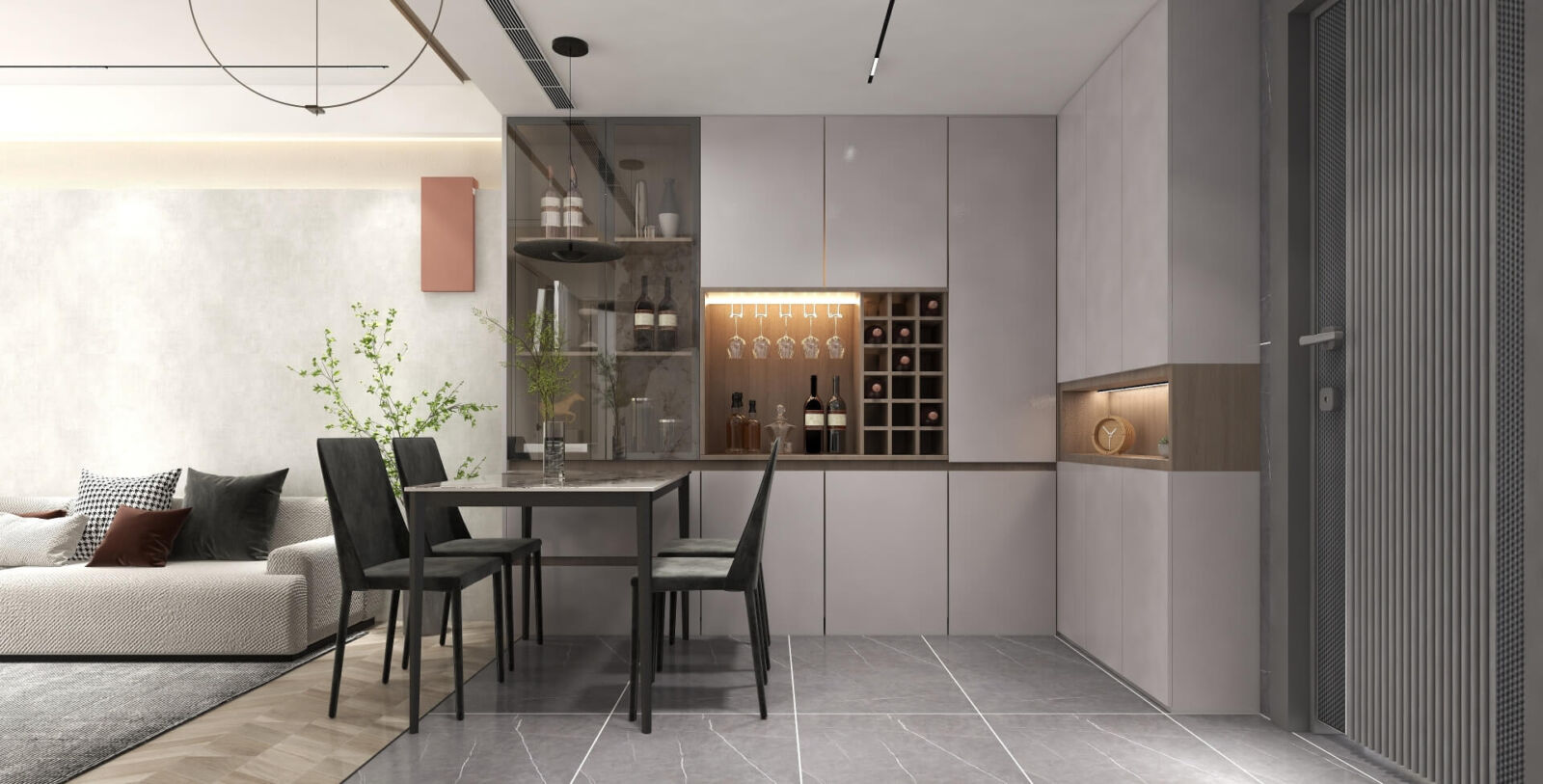
For a complete listing of our properties currently on the market, see our 'Real Estate Japan' main page.
BUYING REAL ESTATE IN JAPAN: A COMPLETE GUIDE
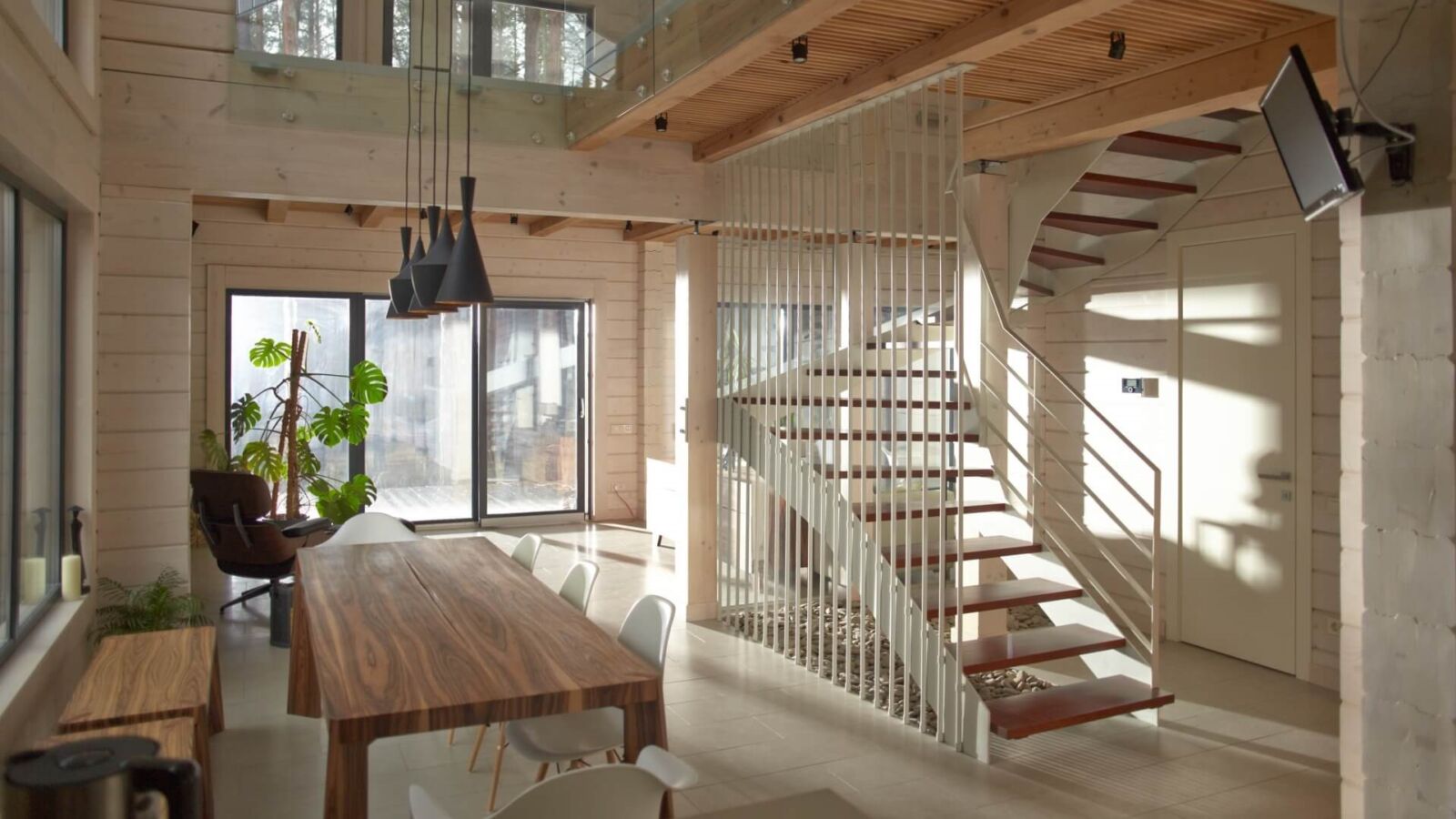

Japan’s property market offers buyers plenty of choice when it comes to residential and holiday properties with a premium on those in and around the country’s best ski resorts – and the first step of the process of finding that ideal property for you is understanding how the market works in Japan and what’s required to complete a purchase. Our 'Buying Real Estate in Japan: A Complete Guide' page includes a step-by-step explanation of the process, taxes and other costs, FAQs and other important information to help make the process as smooth and successful as possible.
THE NAGANO LIFESTYLE
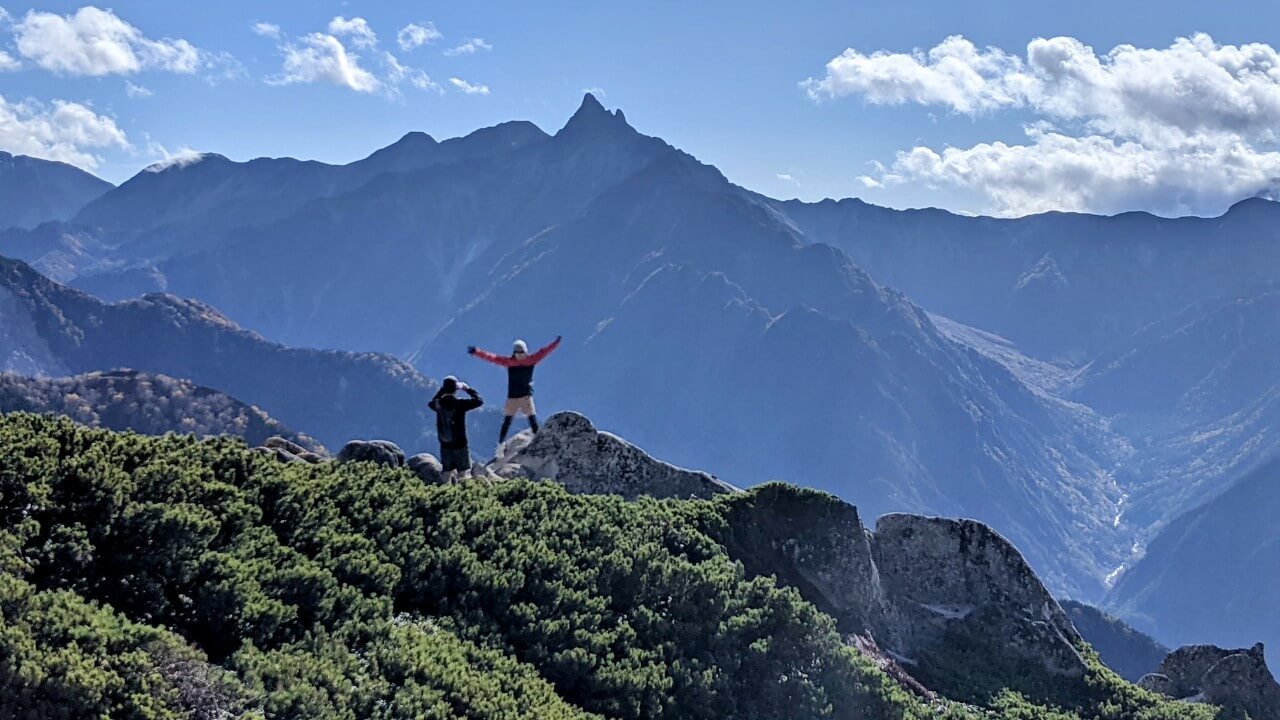
Nagano is a preferred destination for both Japanese and international residents wanting to move away from the congestion and stress of large cities and crowded urban centers. Blessed with abundant and beautiful natural landscapes, great food, enticing hot springs, world-class ski resorts and an easy pace of life pace, Nagano affords residents one of the highest standards of living in Japan – in short, it’s a great place to live, work and invest. Our 'The Nagano Lifestyle' page has all the facts, stats and reasons to choose Nagano and how to go about moving here.














